MX-80 Sound | Interview | “Velvet Underground meets Ornette Coleman”
MX-80 Sound emerged from Indiana’s primordial musical sludge in the mid-70s, releasing the iconic ‘Big Hits’ 7” EP in July 1976.
This monster package by Supreme Echo of 1976 material comprises 18 songs, including the entire original 7-song EP, 2 rarities and 9 previously unreleased tracks, all meticulously mastered from the original analog tapes. Giant 20-page booklet with founding story by vocalist Rich Stim. Lyrics, photos, original surreal art, alt-cover slick, radar-dish sticker.
“Velvet Underground meets Ornette Coleman”
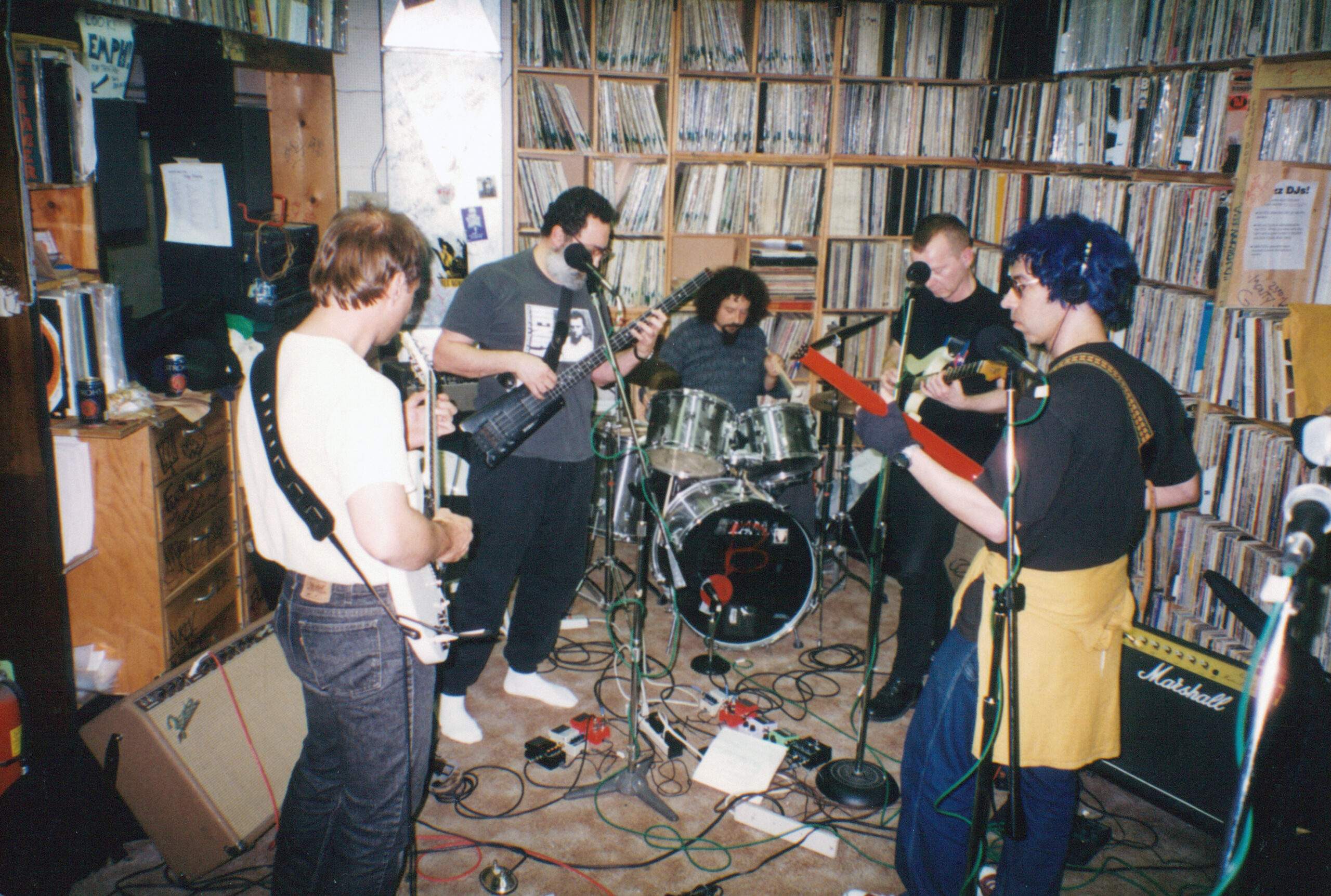
How did it all start for you? Do you remember some of the very early tracks you enjoyed?
Dale Sophiea: The RCA Victor Record Club was an early source of all sorts of classical music, from my hero and mentor Robert Shaw to Artur Rubenstein, until The Swingle Singers started to diversify my tastes. Eventually, a transistor radio and Top 40 radio on WTAC in Flint, Michigan opened things up for me. A pretty good thing in those days: The Everly Brothers, The Ventures, Sam Cooke, The Drifters, The Platters, Ray Charles, young Elvis Presley, Ben E. King, Nat King Cole, Booker T. & the M.G.’s, Little Stevie Wonder, Peter, Paul and Mary, The Beach Boys, The Beatles, The Kingston Trio, ‘Getz/Gilberto’ (Stan Getz and João Gilberto), The Rolling Stones … the list goes on.
What kind of records, fanzines, comics, books would we find in your teenage room?
Dale Sophiea: Mad Magazine was always required reading. Dang, I wish my mother had kept my comic book collection.
My dad was into mysteries, so I would read Raymond Chandler, Conan Doyle, Ellery Queen, Agatha Christie, et cetera in the john when I worked at the family store. My mother was also a reader with varied taste, and the good schools in Flint provided all sorts of literature at or above my age bracket.
Rich Stim: Nerdy stuff. My father stored his Scientific Americans in my room, so I read about stuff like the Cargo Cultists of New Guinea, penguins that can projectile poop, and how cats get confused by optical illusions. I read Mad Magazine when I could sneak it into the house. My record collection was too square to mention, and I didn’t own a turntable till I left for college. Plus, I played oboe in high school, so there was that.
Was there a particular moment when you knew you wanted to become a musician?
Dale Sophiea: First day in Miss Bechtold’s Sunrise Singers in 5th grade.
Rich Stim: At college, it was evident that the opposite sex preferred musicians over writers (my pursuit). I taught myself saxophone and guitar and began jamming with my friend Dave Mahoney. We didn’t attract any girls to the trailer park where we lived, but we explored the world of free jazz and primitive rock. That was the origin of Chinaboise.
Dale, I guess one of your first bands were you involved with was The Screaming Gypsy Bandits, were you in any other bands before that?
Dale Sophiea: Before The Screaming Gypsy Bandits, my only music ensembles were choral groups all through school, and the Marv Crawford Singers.
Would you like to share how you get involved with The Screaming Gypsy Bandits?
Dale Sophiea: Bloomington was a comfy chair for us during the late 60s. We led a relatively carefree existence and hung out together for hours on end. Many of us, at times including Mark Bingham, Caroline Peyton, Michael Gribbroek, Patrick Callanan, Tom Harlan, Bruce Anderson, me, and others, lived in a house on 10th and Washington when we started The First National Band.
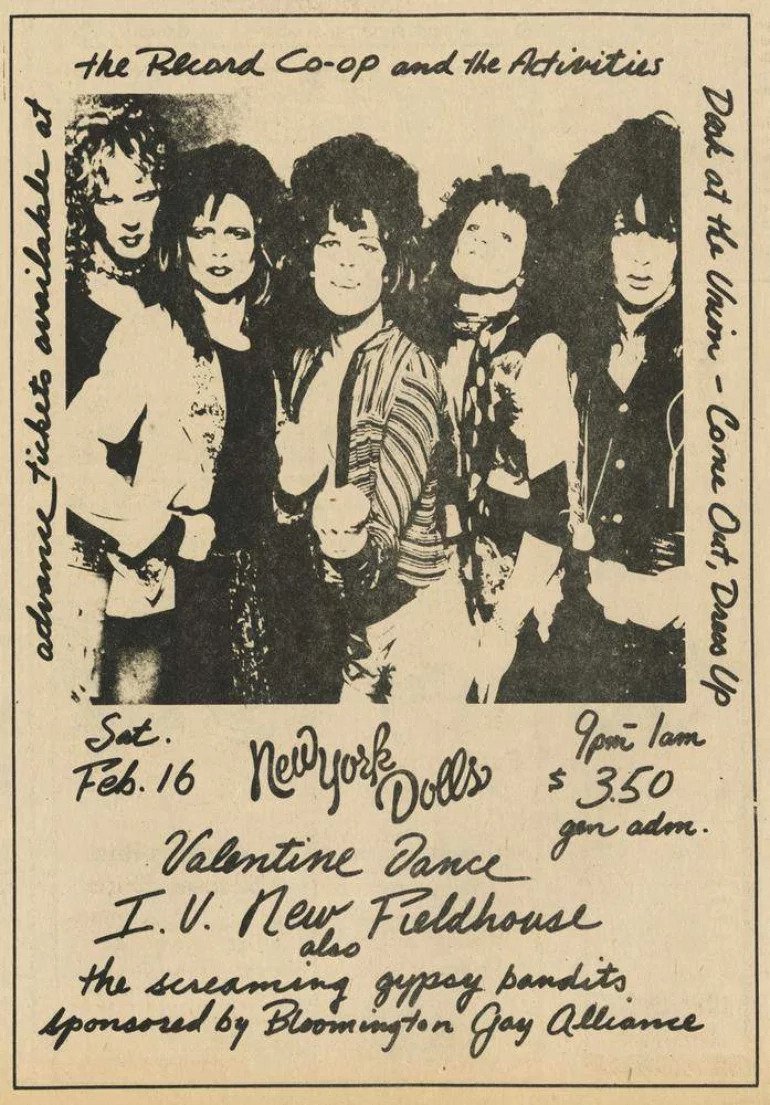
Our obsession with Zap Comix led us to change the name to The Screaming Gypsy Bandits, after S. Clay Wilson’s obscene motorcycle gang. Bob Lucas, Bill Schwartz, and more horn players joined in the fun. This was before I was proficient on bass, but I sang and played hand drums until I picked a Fender, so Bruce Anderson and I could embark on MX-80 Sound.
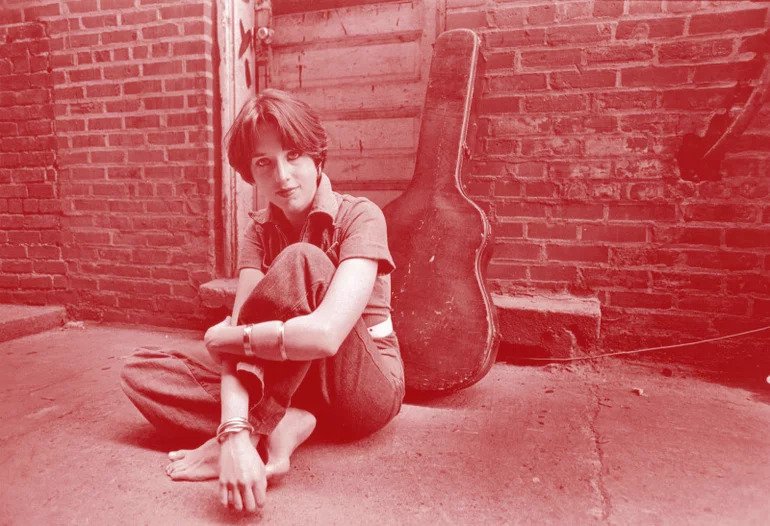
Did you play any shows and if so, where and with whom?
Dale Sophiea: As I said, we all hung out together and had a good time recording Mark’s tunes, while learning from The Two Marks – Hood. And Bingham, how a recording studio worked – an early education on how we would record our music later on.
Fred Cook, Caroline’s husband at the time, released it on Bar-B-Q Records, which would also release many albums by Bloomington musicians, including Big Hits. Maybe 1,000 copies were made. Fred says: “It didn’t go gold.”
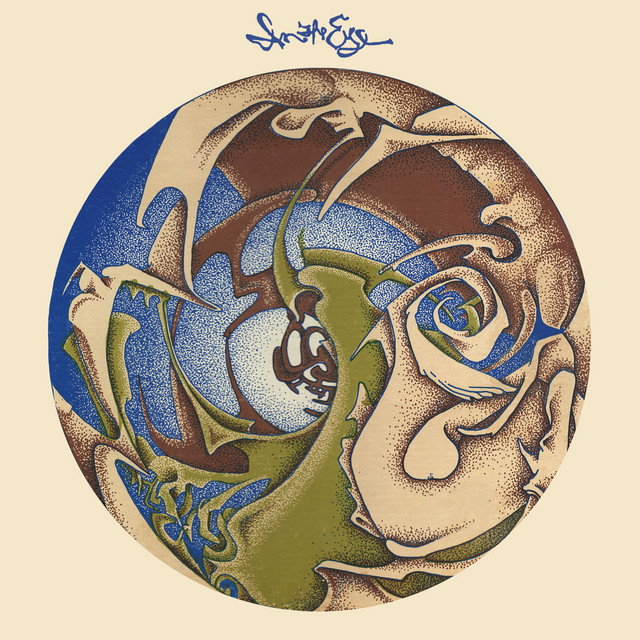
As the Screaming Gypsy Bandits, we played a lot of shows in Bloomington, around Indiana, and even in my hometown of Flint Michigan. My poor dad walked out when I sang Beefheart’s ‘Willie The Pimp’.
Other than that, maybe our biggest show was at the huge IU field with The Byrds, B.B. King, and the Jefferson Airplane. We were paid $50, which led to us abruptly firing our “manager.”
Rich, were you in any bands before Chinaboise?
Rich Stim: No.
Tell us about Chinaboise.
Rich Stim: Chinaboise was Dave Mahoney and me and anybody else I could wrangle to play. A recording engineer lived in the trailer next to ours. So Dave and I recorded a bunch of songs and got our friends to perform on the tracks. I got up the courage to ask Bruce Anderson to perform on a couple of tracks which was a big deal because Bruce was the number one guitar star in southern Indiana, popular among the cognoscenti and the masses. Joy was my middle name when one of the Chinaboise tunes made it onto an actual LP, the Bloomington sampler (‘Bloomington 1,’ 1975 via Bar-B-Q Records). Later, a bunch of Chinaboise songs were re-done by MX-80.
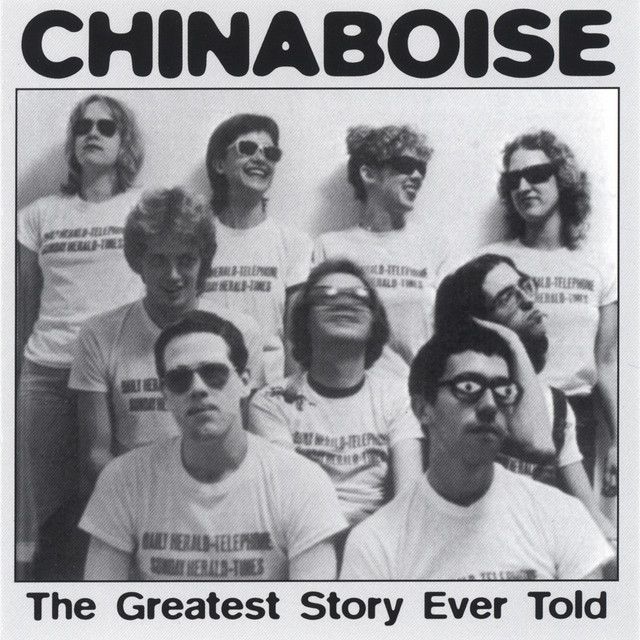
Dale, you were in The Screaming Gypsy Bandits together with Bruce Anderson, what led to the formation of MX-80 Sound in 1974?
Dale Sophiea: For some crazy reason (which the school later regretted), Indiana University dumped most of the arty types on campus into Willkie Quad, and many lasting friendships took root there.
Bruce Anderson was in art school and I majored in music. We soon discovered we enjoyed the same sorts of music, literature, and art and became inseparable from then on. After school, we stayed in Bloomington and joined The Screaming Gypsy Bandits.
In 1973, we decided to start a band to explore our own ideas apart from The Screaming Gypsy Bandits. Though I had been singing bass since Jr. High, but didn’t play an instrument, I bought a Fender bass and Ampeg amp and learned to play with Bruce. Once things started to gel, we added Jeff Armour on drums and practiced in my bedroom. (My wife Elania was a saint for putting up with this). I recorded everything on a portable Panasonic mono cassette recorder, and Supreme Echo may release selections from our first couple of practices (which Peter Conheim is faithfully remastering).
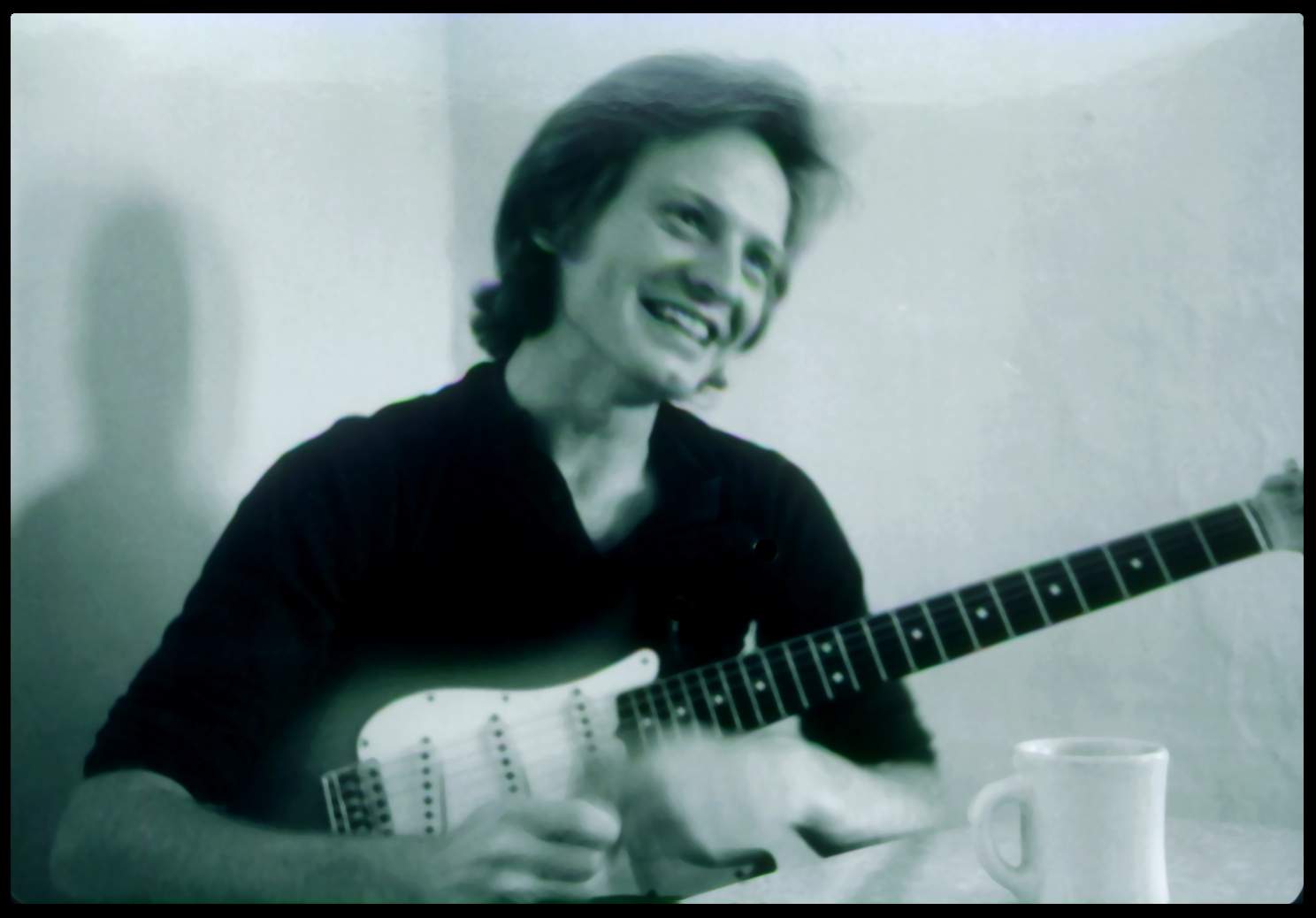
Rich, what led you to join MX-80 in 1976?
Rich Stim: Bruce was revising MX-80’s lineup and asked Dave Mahoney and me to join. Like BTO (Bachman-Turner Overdrive) says in ‘Second Hand,’ “Get a second-hand guitar, Chances are you’ll go far, If you get in with the right bunch of fellows.” Bruce Anderson, Dale Sophiea, Jeff Armour, and Dave Mahoney were the right bunch of fellows.
[Rich Stim] Together with Bruce Anderson, you become the band’s primary songwriters, with occasional lyric writing by Andrea Ross (aka Angel Corpus Christi). Would you like to share some further words on how the lineup stabilized?
Rich Stim: Bruce Anderson brought me into MX-80 to create an accessible entry point for the oft-impenetrable music. I would tape practice and try to interpret Bruce’s compositions. I would listen for words and phrases in guitar riffs. We wrote about 100 songs that way. Andrea Ross began writing lyrics after finding an organ donation card in my wallet. That inspired her to write the words for ‘Civilized / Demeyes’ on the ‘Hard Attack’ album. She also contributed the lyrics for our most famous tune, ‘Someday You’ll Be King’.
How did you decide to use the name MX-80 Sound?
Dale Sophiea: Bruce Anderson made up a silly origin story when people asked: “Implosion, Explosion, the sound of the 80s,” but I think the answer is quite a bit more mundane – he was actually inspired by SKU numbers in a hardware store he worked at that started with MX, because anything cool had to have an “X” in it back then.
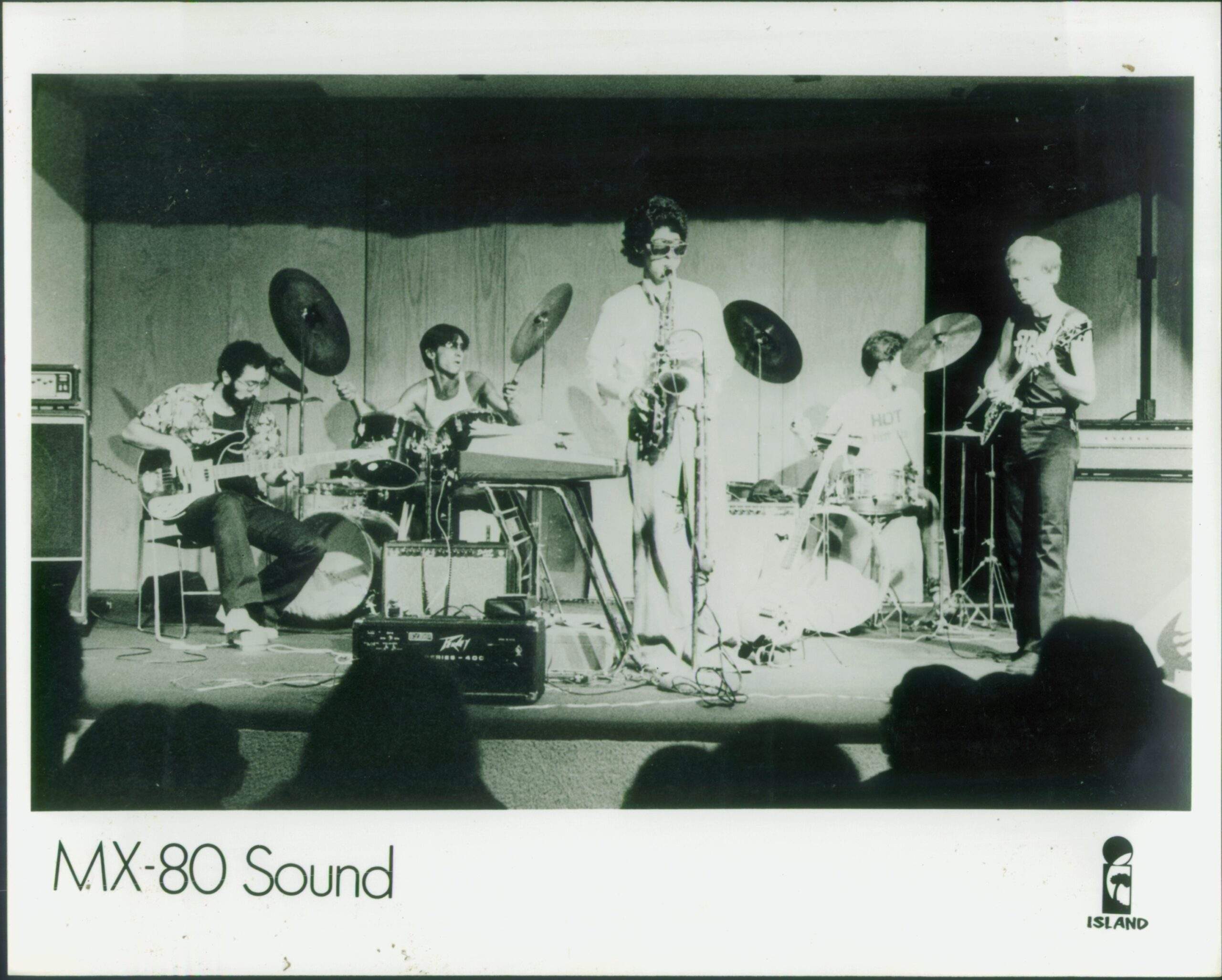
So the quartet later included Rich Stim (vocals, guitar, and sax) and Dave Mahoney (drums), both formerly of Chinaboise, joined MX-80 in 1976 and Teare left the band to pursue a full-time art career. Anderson and Stim emerged as the band’s primary songwriters, with occasional lyric writing by Andrea Ross (aka Angel Corpus Christi). Would you like to share some further words on how the lineup stabilized?
Dale Sophiea: Ornette Coleman, Captain Beefheart, Grateful Dead and others had all used two drummers to good effect. Duties in our band often used Jeff Armour for unbridled energy with Kevin Teare (and later Dave) holding the fort. Jeff Armour, Kevin Teare, Bruce Anderson, and I played a few songs for MX-80’s first gig, an instrumental set at the Bar-B-Q Records festival in July 1975 on the tiny stage at the Bluebird Tavern. One of them, ‘Spoonfight’ was our first ever-released recording, on the Bar-B-Q Records Sampler, which also included an odd group called Chinaboise featuring Rich Stim and Dave Mahoney. It didn’t take long for both of them to be incorporated into MX-80, and the rest is history…
Bruce was already a virtuoso, having had his guitar glued to his hands for most of his life, but he and the rest of us all were all on the same wavelength. And the daily rehearsal / jam sessions (now in our living room) meant we knew our material cold, and could easily turn on a dime during daring improvisations. It was an exhilarating discipline which released us from whatever else might be happening in our lives, or the world, for a couple hours a day. On Sundays we rejoined society.
What was the local scene like? You probably had some difficulties getting gigs with the material you played? MX-80 performed a regular series of Sunday concerts at the Monroe County public library, how did that come about?
Dale Sophiea: We played a few early gigs at The Gables, the fabled campus restaurant where Hoagy Carmichael used to perform (and where Elania was now the cook and I worked as a waiter).
Unsurprisingly, since we were far from a big name act, our idiosyncratic sound was hardly welcomed by many of the locals. We did manage to play every local bar – but usually just once or twice – so in 1975 we decided our best course was to take matters in our own hands by reserving the auditorium at the Monroe County Public Library every few months. We were able to play exactly what we wanted, how we wanted, and without any commercial expectations, for a few dozen diehard fans. These included a slew of curious, geeky teens who, like the kids that booked The Screaming Gypsy Bandits for that disastrous school dance at Berkeley High, wanted live music, but couldn’t get into bars yet. We saved them from the horrors of mediocre white boy blues and Grand Funk Railroad covers (though we did really fuck up their song, ‘We’re and American Band,’ by covering it years later.)
For all this, we had only to pay the custodian $20 and throw up some flyers.
Rich Stim was a laff riot. While we boringly tuned up, he stalled for us by drolly deadpanning groan-inducing jokes and puns read off of 3×5” note cards – often abruptly abandoning the jokes mid-delivery, as soon as we finished tuning. He gave away our tapes, records, and paraphernalia, along with other silly stuff he got from working at the Herald-Telephone as a pop music critic.
A video of one or two of those performances were aired by the library’s public access station, Gulcher Records put out a CD of performances there in 1977 and 1978, and this Supreme Echo ‘Big Hits’ release contains some cuts from those shows.
An early break for MX-80 was opening for Patti Smith at Poplars Hotel Ballroom on March 14, 1976. There wasn’t really a stage, just an area roped off for the bands, which really pissed her off, so she holed up in a side storeroom to avoid contact with people. Her guitarist was friendlier and really dug our set.
Rich Stim: Bruce’s guitar-slinging reputation got us one booking at every local club, but after that, we were usually persona non grata. I think Dale landed those gigs. The library had an auditorium, and they offered public access. Because it was daytime and no alcohol was sold, kids could come, and that was fun. They thought it was cool that we were loud and weird.
The band’s first studio release was the EP, ‘Big Hits: Hard Pop From The Hoosiers’, recorded at Gilfoy Studios, produced by Mark Bingham and engineered by Mark Hood. What are some of the strongest memories from working on it?
Dale Sophiea: In April ‘76, we went into Gilfoy Sound Studios with Mark Bingham and Mark Hood to record ‘Big Hits’. Jack Gilfoy, totally confused about what to do with our complicated sound, suggested we use settings he’d learned were used by The Beatles, “cause what could go wrong?” Luckily, the “Two Marks” understood that we had little relationship sonically to the Fab Four, and found settings more suited to our noise. And we rehearsed six nights a week, so we were able to go in and nail each song quickly. That took us from “anonymity to obscurity,” as one of Rich’s flyers put it.
Kevin Teare left for New York to pursue his art in May, though he hadn’t played with us for a while leading up to that anyway. He chuckles at the irony of that timing…
Rich Stim: I wrote a history of that recording, and it’s included with the ‘Big Hits And Other Bits’ from Supreme Echo. The studio owner had the control room settings for a Beatles-styled band. Thank God for the two Marks, especially Bingham. We got a recording that’s still relevant and unique.
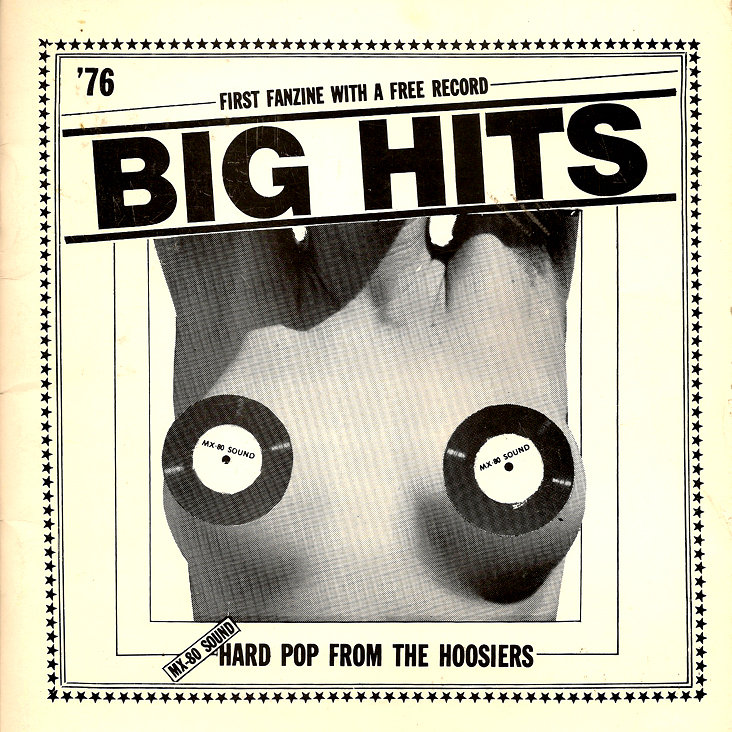
How did you get signed to Island and what led to ‘Hard Attack’ in 1977?
Rich Stim: We’d sent ‘MX-80 Sound – Big Hits – Hard Pop From The Hoosiers’ to UK fanzines when the punk scene blew up and somehow managed to be included in that crowd. Howard Thompson from Island UK saw a review of ‘Big Hits’ in Melody Maker, snagged a copy, and called me where I worked — I was the obituary writer at the Bloomington Herald Telephone. We made a deal to license an LP, and Howard also wanted ‘Tidal Wave’ from ‘Big Hits.’ I believe Island paid around a thousand dollars and also got the publishing.
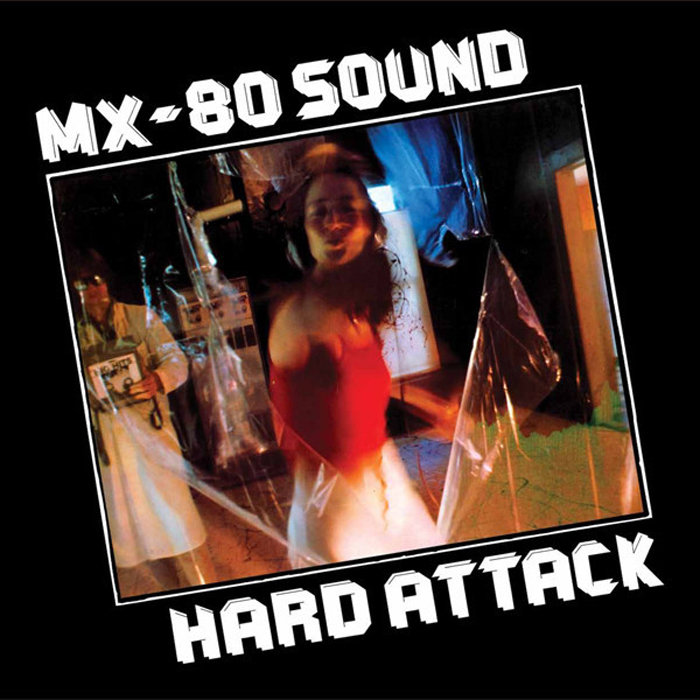
Can you share some further words about the making of your debut album?
Rich Stim: One thing I remember is that there was some intrigue involved in the ownership of the recording, and I had to race to the studio on my one-speed to get the two-inch tapes. I didn’t realize how heavy the reels were until I put them in my front basket, which flattened my front tire. I ended up walking my bike a couple of miles.
How was the album received by the critics? I guess they had trouble with your complex music?
Dale Sophiea: Howard Thomspon at Island Records read about ‘Big Hits’ in Carolyn Coons’ Sounds Magazine review, and got in touch with Rich Stim. He then made two visits to Bloomington – first in Oct. ’77, when we took him around town and to my film series’ screening of John Waters’ “Female Trouble,” which he says completely blew his mind, since “stuff like that didn’t exist in England.” More importantly, we played a set for him in our new rehearsal space in my basement. This led to his returning in mid-winter to hang out. Howard had never experienced this sort of winter, and was ill prepared to walk back and forth between our places – our main mode of transportation – especially in snowy weather.
By then, we had recorded ‘Hard Attack’ with the two Marks, again at Gilfoy’s. Howard took advantage when Chris Blackwell, his boss at Island Records, was away scouting talent in Jamaica, and gave us $1000 to put it out. While the cat’s away … In return, Blackwell hated it, and allowed its distribution only in England and the Benelux countries – not the United States! It attracted little attention aside from critical raves from non-mainstream critics, like at Creem, Trouser Press, Forced Exposure, et cetera.
Rich Stim: I was pleased with the reviews. Interview, Creem, Trouser Press, Melody Maker, Sounds, and NME said nice things.
What led you to relocate to San Francisco in 1978?
Rich Stim: We were on the verge of signing with Bronze or Island, and the labels wanted us to be in New York or LA. We picked San Francisco instead, and then both deals fell through.
What was the scene in San Francisco back in the late 70s? Were there still a lot of hippies from the 60s or was that completely gone?
Rich Stim: San Francisco was great, and I couldn’t imagine a better place to be at that time. The city was kind of beaten down, with vestiges of hippies, et cetera, but there was also a lot of crazy energy with Zoetrope and Survival Research Labs. Doggie Diner was still open, and Ferlinghetti hung out at City Lights. Andrea Ross worked at Tower Records, so we often hung out in North Beach at the fabulous Italian bakeries or Caffe Trieste. We lived in the funky foggy Sunset District, where the avenues were wide and working class.
“The punk crowds pretty much hated us”
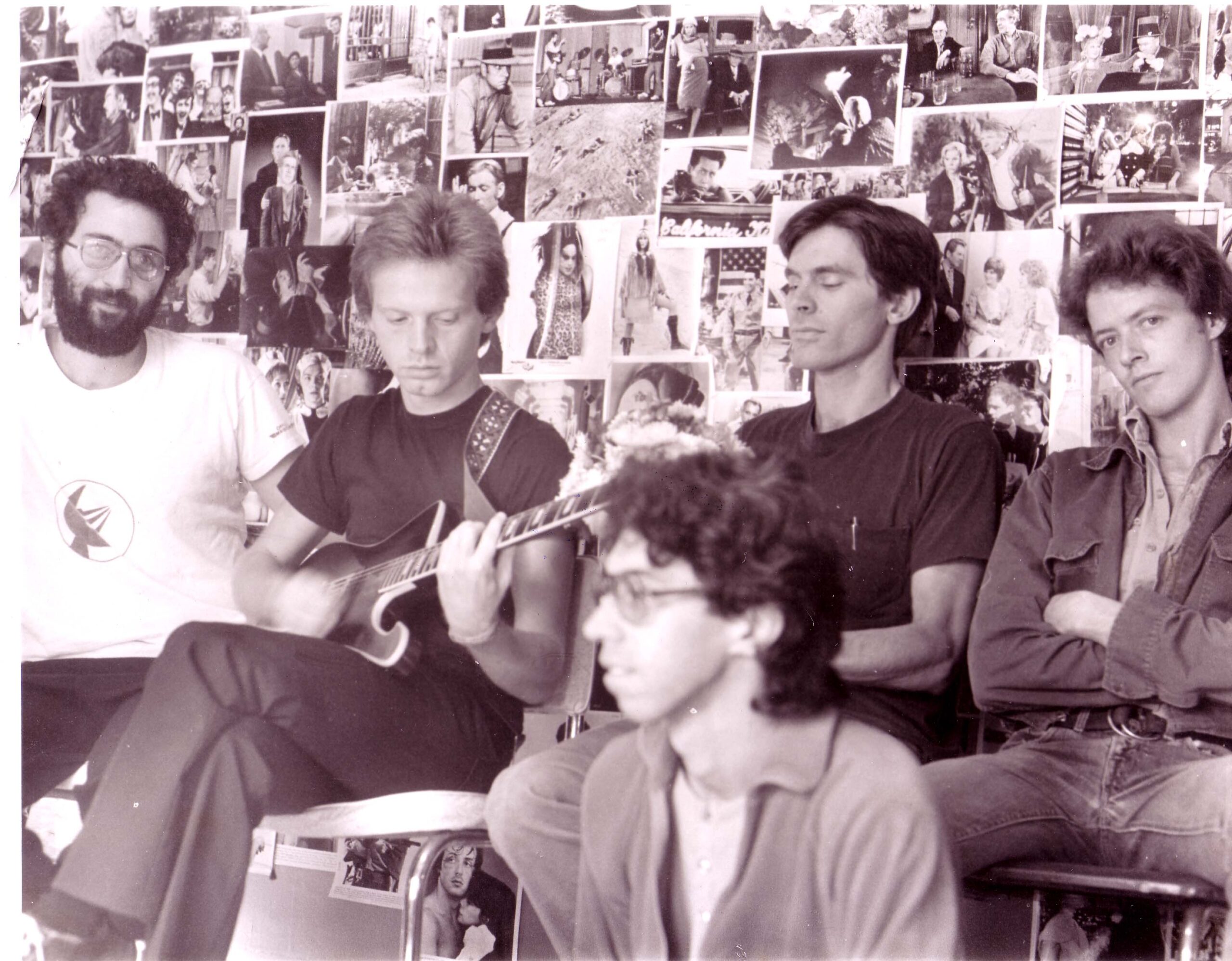
You were playing in venues such as the Mabuhay Gardens, Deaf Club, and Savoy Tivoli, but your music was not really in sync with punk…
Dale Sophiea: Howard moved onto Bronz Records and said we’d ought to relocate to a coast. Since we’d seen a few of our friends get weirdly distracted in New York, and since California seemed so much more pleasant. And then Ralph Records invited us to climb aboard … San Francisco here we come!
We thought we had it made until the only gigs we could get at first were in the punk club – the Mabuhay Gardens. Dirk Dirksen would let anyone play there so he could make fun of low hanging fruit. We got to play with some cool bands including X, No Sisters, Dead Kennedys, Avengers, The Mutants, and such, at a wider variety of punk venues, but they would really only talk to us one-on-one when no one else was around. The punk crowds pretty much hated us, and I guess the musicians didn’t want to risk losing status by being chummy with us geeks. When the crowd threw things at us, it wasn’t good fun, like with their favorite bands; it was bottles and ashtrays … they really meant it!
We just didn’t fit in with the punks because we weren’t. We had a different aesthetic and no theatrics, except for Rich’s wit; our songs were very complex; and we were pretty proficient on our instruments. When things opened up, we played with higher concept bands like DNA at the Savoy Tivoli, Merzbow at Bottom of the Hill, Negativland at Ollies, The Jars, Red Asphalt, The Units, Pell Mell, Tuxedo Moon, Chrome, and James Blood Ulmer, at places like the I-Beam, Berkeley Square, Boarding House, On Broadway, The Stone, et cetera.
And finally, what should have been a breakout gig for us: The Stranglers at The Stone. Instead, this experience broke up the band when their manager wanted to replace us with another of his acts the night of the show. Rich and Dave had pretty much already had enough of club drama and disrespect by then, and it took years for us to get them back to record with us. On the bright side, the Stranglers seemed really into our set.
Rich Stim: No, though the other local bands were friendly enough. Jello Biafra of the Dead Kennedys went out of his way to support us. But the fans didn’t know what to make of us. I felt bad when they threw stuff but they wanted punk and we weren’t punk.
You were performing at the nearby Temple Beautiful soon after the tragedy, overlooking a parking lot filled with the victim’s cars. Did Peoples Temples mass suicide affect you in any way?
Dale Sophiea: We had just moved to SF in August, and in November alone were immediately gob smacked by the Jonestown massacre, the Milk/Moscone murders and White Night riots, and a 6.9 earthquake & aftershocks that rocked our third floor apartment, which prompted our parents to ask if we were sure we wanted to be here. Until we saw the People’s Temple lot full of victims’ belongings stacked in crates, the whole thing was more abstract than real to us. Only three months into our California life, we quickly learned we weren’t in Kansas (Indiana) anymore.
Rich Stim: The week it happened, we played a gig in the building next door to People’s Temple. The place we played — Temple Beautiful — used to be a synagogue, which was weird enough, but if you looked out the window, you could see the parking lot with all the Peoples Temple cars left behind. It was kind of strange that Jim Jones started about 30 miles away from us in Indiana, and he took his “band” to San Francisco, too. The Dan White shooting happened soon after that, and we barely got home from a gig the night of his verdict. There were riots and cars set on fire. It turned into an MX-80 song, ‘White Night’. Dale sings on that track, and he did some excellent basso profundo.
Were you familiar with The Residents before they signed you to their Ralph Records in 1979?
Dale Sophiea: Of course.
Rich Stim: I knew they existed, but I had never met them.
Two releases followed, the first Ralph recording, ‘Out of the Tunnel’ (1980), was recorded at Mobius Music Studios, again with Mark Bingham producing and your second Ralph release, ‘Crowd Control’ (1981), was recorded at New York’s Celebration Studios and was their final collaboration with producer Mark Bingham. Would you like to share some comments on the two albums?
Dale Sophiea: Oliver DiCicco engineered at Mobius, and again, we were so well rehearsed it was a fairly low-key session.
Mark Hook got us into that really whiz-bang studio for a song – we’d come in after everyone left and had the place to ourselves. We were on our East Coast tour and road tested by the time we got to Celebration. Very tight, fun session.
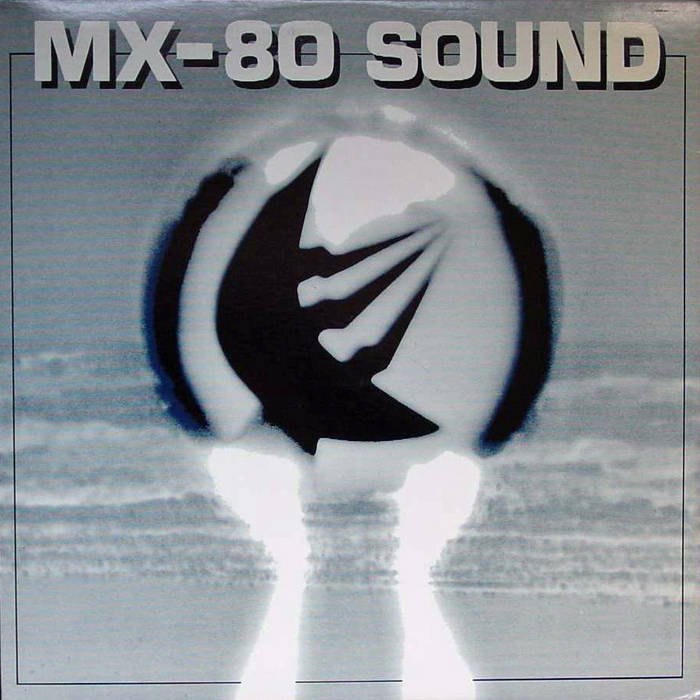
Rich Stim: Jeff Armour left the band before we made those albums, so MX-80 became a one-drummer band, with Dave Mahoney redefining the group. Dave was a fantastic drummer. He incorporated all kinds of influences — Charlie Watts, Jack DeJohnette, Tony Williams, Levon Helm, Billy Cobham — and brought them to those two Ralph albums. He and Bruce were a potent brew, and they made sparks fly. You can hear their collaboration at its finest on ‘Face of the Earth,’ the opening track to ‘Crowd Control’.
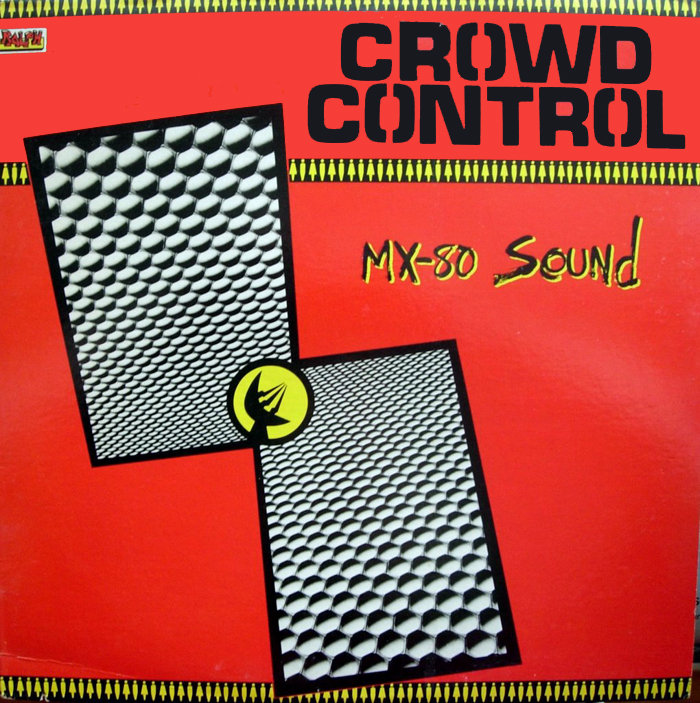
After Ralph Records, you dropped the “Sound” from your name, why is that?
Dale Sophiea: I guess it seemed cleaner, and sounded like a good idea at the time, but we eventually arrived at, “If it ain’t broke, don’t fix it.”
Rich Stim: It was Bruce’s idea. I don’t know for sure why he wanted to do it. But I always felt it was his way of jettisoning some of the pressure he felt when we didn’t have a record deal and weren’t getting any bookings. As if shortening the name gave him a more nimble and operable band. It turned out to be a big mess in the digital cataloging of the band because at Apple Music and Spotify, et cetera, some of the tracks are attributed to the full band name and others to the abbreviated. Bruce wanted the final album to go out as MX-80 Sound.
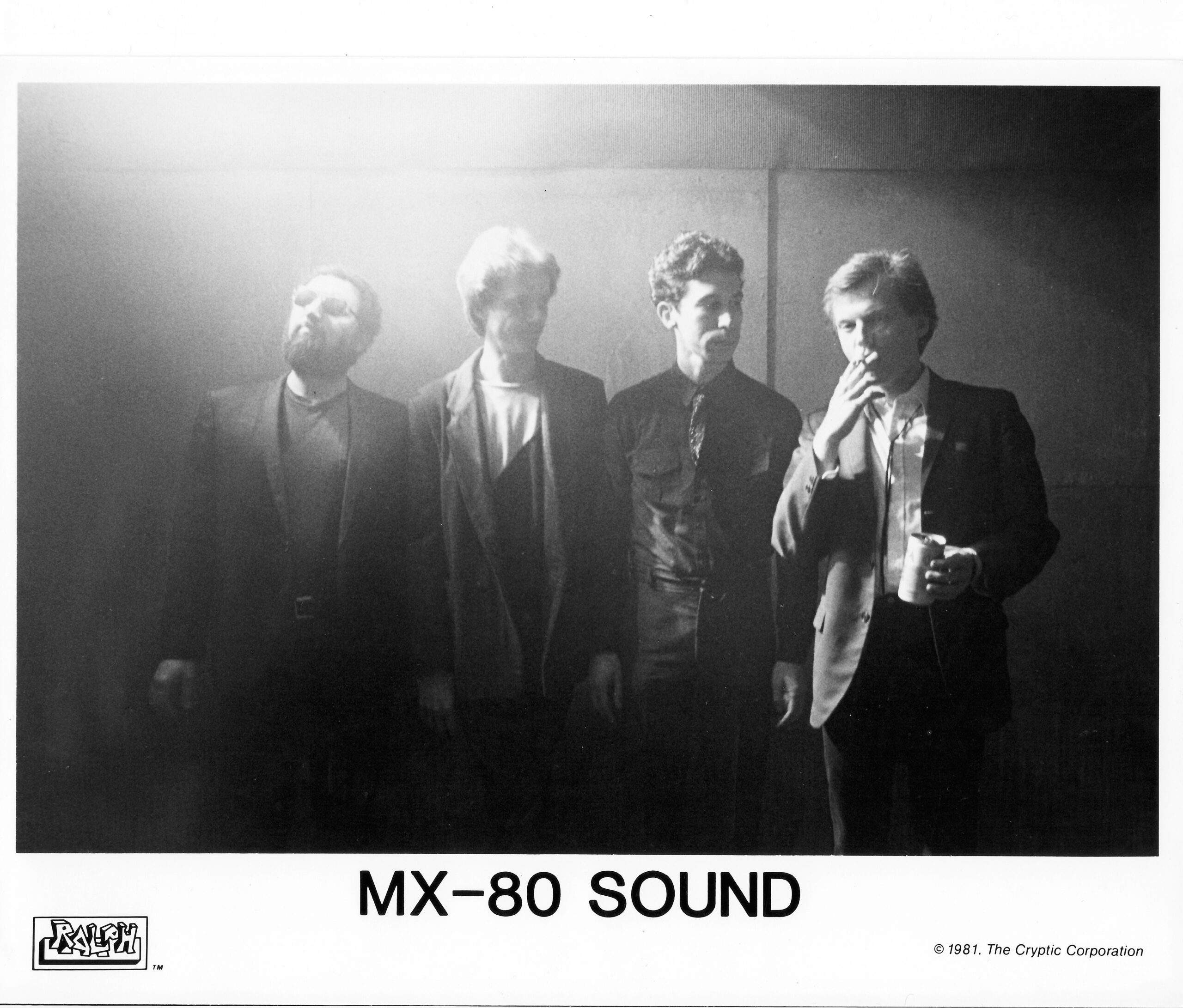
In 1984, the band returned with a two-drummer format with the addition of Marc Weinstein (ex-Mutants). The following year guitarist Jim Hrabetin (also ex-Mutants) joined. In 1986, the band released a cassette recording, ‘Existential Lover (Quadruped)’. Tell us about it?
Rich Stim: With Marc and Jim, MX-80 became more of an underground Eastbay band. That cassette recording features a rather odd drum machine, but it has some good songs, especially ‘Dough Boy Joe,’ in which Bruce reveals his inner R. L. Burnside roots, and ‘Monster From Japan’. And it has my favorite MX-80 love song, ‘Pink Carnations’. It was also a somewhat dark time, and that’s why you have ‘Everything Hurts But the Pain’ and ‘I Have Lived Too Long’.
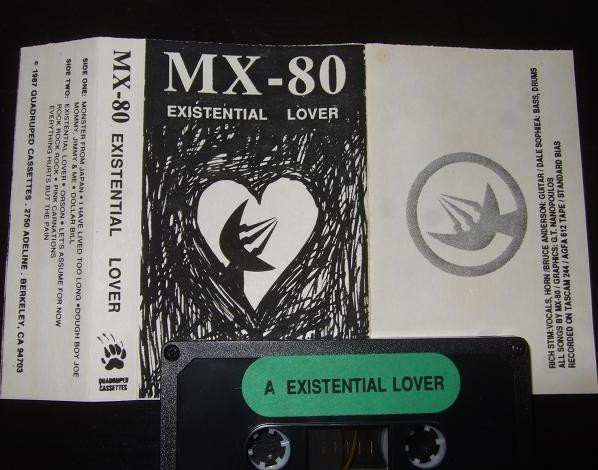
What about ‘Das Love Boat’. It was an instrumental album that got a Parental Advisory, haha.
Dale Sophiea: Rich went through a stage where he didn’t want to hear his voice, but wanted to release something. Paul Stubblebine was digitizing all of our recordings up to that point, and in the process we collected all of our instrumentals and … voila!
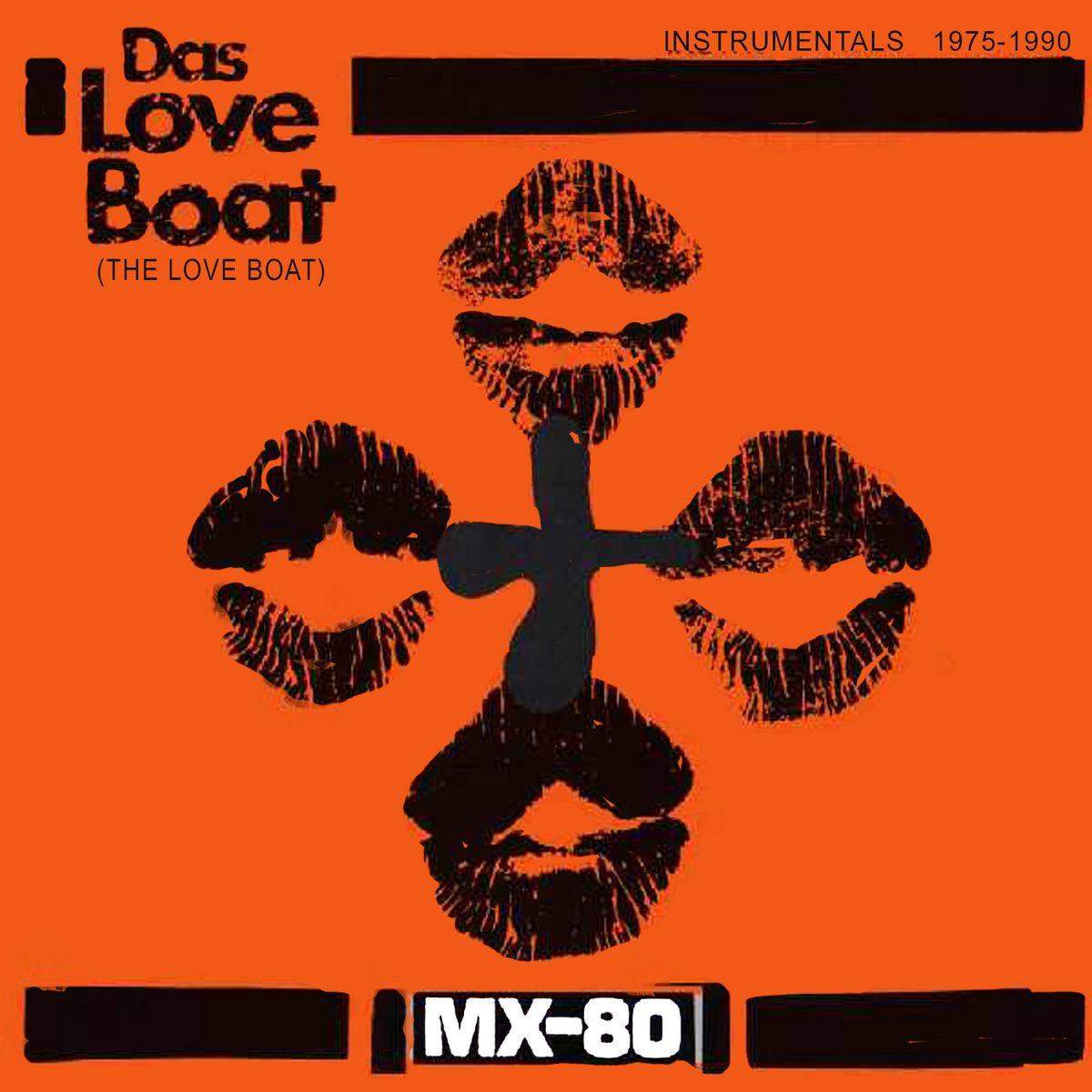
Rich Stim: I believed the band’s lack of commercial appeal had much to do with my voice, so why not release a recording without any vocals? The Blue Messiahs were my inspiration. Of course, ‘Das Love Boat’ was no more popular than our other recordings. It does feature one of Bruce’s best compositions, ‘Clown Sex’.
In 1996 you released a very dark album, ‘I’ve Seen Enough’. What was the idea behind it?
Dale Sophiea: We recorded and mixed some old and some new songs at Polymorph Studios in Oakland with Dave Immergluck (Counting Crows, Camper Van Beethoven, Monks of Doom, John Hiatt). That one was really fascinating, as we radically reshaped some of the recorded material during the mix down.
Rich Stim: That’s a pretty cool album and features some-re-dos from the ‘Existential Lover’ cassette (‘Existential Lover,’ ‘Dough Boy Joe,’ ‘Monster From Japan’) and some good new songs like ’15 Laffs,’ ‘You Can’t Win ‘Em All,’ ‘Have Another Drink,’ and ‘Thank You Boss’. Bruce disfavored this recording, but I liked it a lot, and I thought Dave Immergluck did a great job.
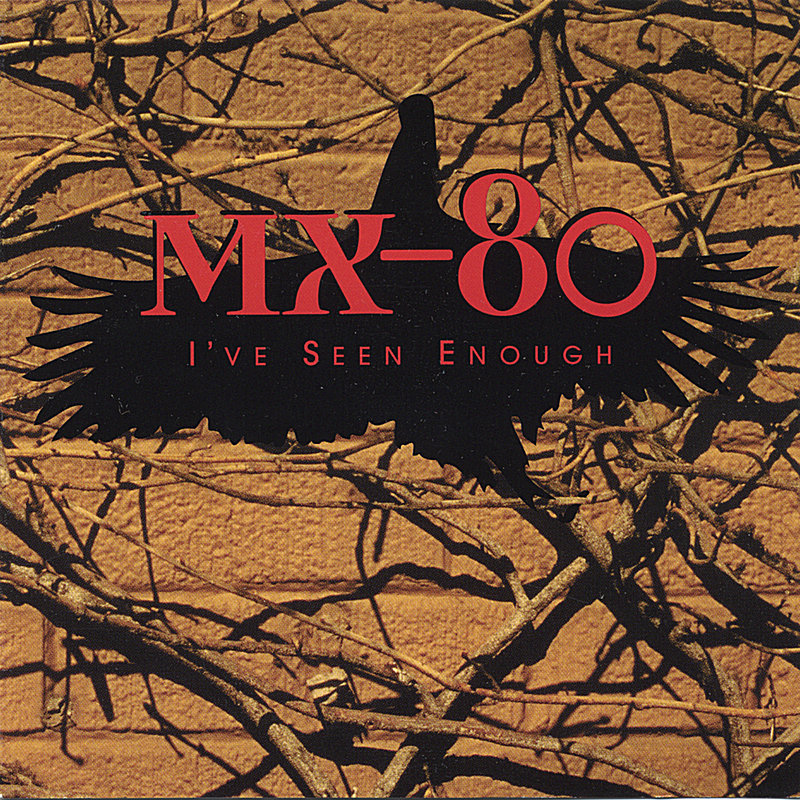
‘We’re an American Band’ was released in 2005, how was it to work on it?
Dale Sophiea: Fun. Rich composed the song templates with words, music, and samples, and sent them over to us to shape into final versions. We came in and sculpted as usual.
Rich Stim: I wanted to do another album, but I didn’t want to go over to the Eastbay all the time to practice. So we tried something different. I originated the music and the lyrics and sent the files to those guys to expand and improvise. It has some beautiful songs, including our holiday classic, ‘Christmas With the Devil’ (for which there is an excellent video). I like ‘Mr. Watson,’ ‘You Turned My Head Around,’ ‘Cry Uncle,’ and ‘Lights Out’. We got a lot of views for our grumpy old man YouTube video of ‘We’re an American Band,’ and it also stirred some angry comments from Grand Funk fans.
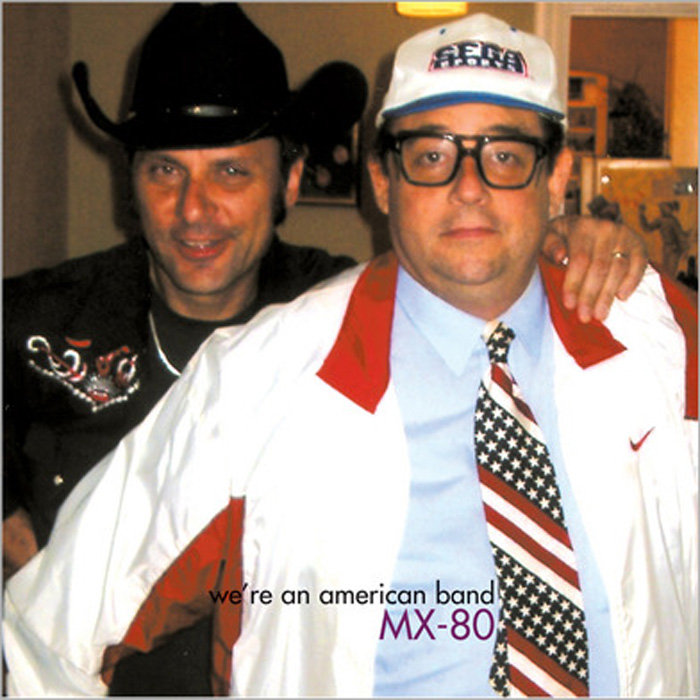
You are friends with Steve Albini, how did you first get in touch?
Dale Sophiea: Bruce and I went to a Big Black show at the I-Beam, and went back to say hello afterwards. He was super gracious and said he was a big fan. After that, he invited us to play with Shellac in Chicago at the Pine Tar .406 Fest, and again in SF at the Great American Music Hall. He offered to record us, and we finally sort of took him up on it this year when he mixed ‘Better Than Life’ with us in February.
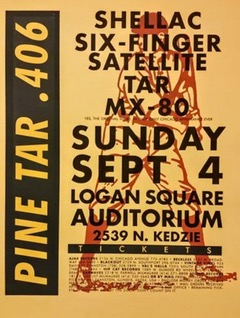
Rich Stim: It could have been when he asked us to play the Pine Tar .406 show in 1994. Andrea and I got to be friends with him and Bob Weston and Todd Trainer, and Shellac would stay at our place when they toured Northern California. They are interesting people.
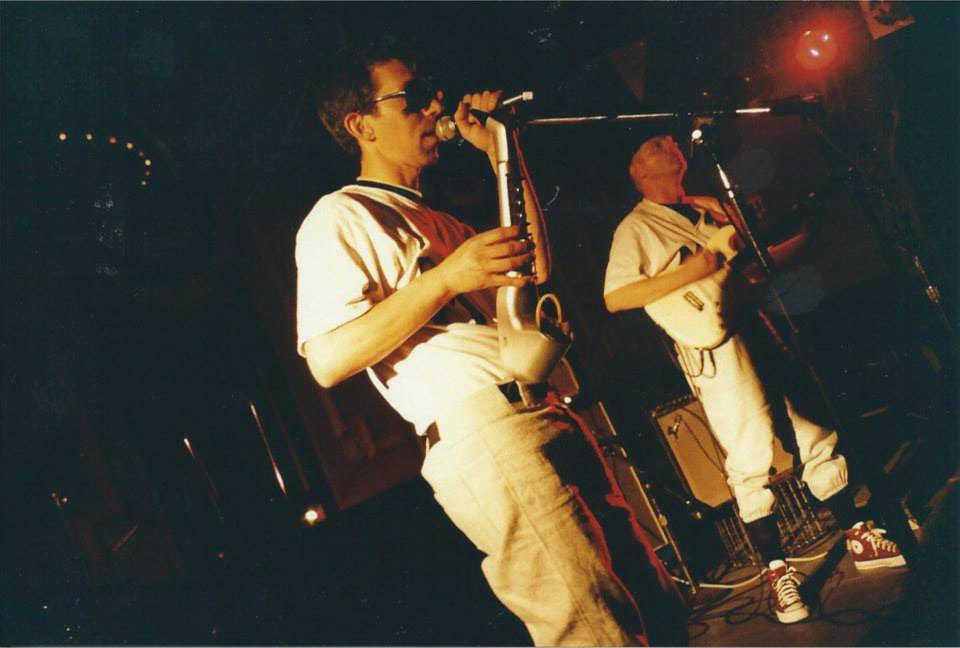
In 1985 you started another project with Bruce Anderson. What can you tell us about O-Type? What about Half-Life?
Dale Sophiea: When Rich and Dave left on their sabbaticals, Bruce and I created Quadruped Cassettes to release a series of albums with our side bands (O-Type, The Gizzards, and Brutality, and Half-Life), all recorded on a Tascam 4-track Portastudio cassette recorder. Bruce played all the guitar parts, and I was on bass, samples, a Sequential Circuits Drumtraks drum machine, and engineer.
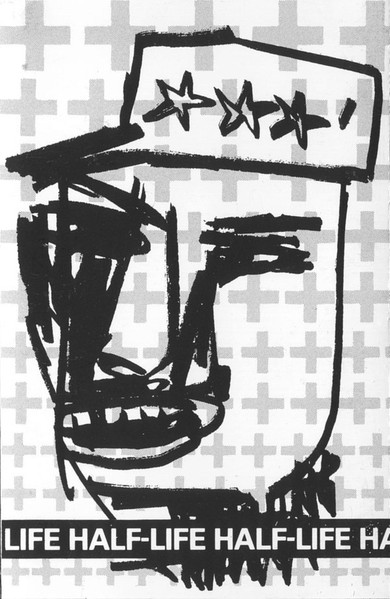
We conjured up the music for ‘Existential Lover’ in that setting, and Rich came back to the band with those wonderful vocals. Half-Life sort of started as a soundtrack for a script I’d written, and evolved into the album closest to where my head was at the time.
Eventually, we played a couple quaint gigs with that set up, but wanted to really start playing out again, so we turned O-Type and The Gizzards into real bands, with Marc and Jim filling out the roster. We rehearsed in the studio in my warehouse apartment 2 or 3 times a week, and started playing out in clubs and galleries.
Bruce wrote song templates we improvised over, so every song was always the same, while always being different. We played an improv music festival once, and were outraged at the guy who set it up because it wasn’t what he considered “free” improvisation (as if good improv players shouldn’t have any idea what they were going to do beforehand). We thought he was clueless, but were never asked back after that.
We got really good at confusing people wherever we played.
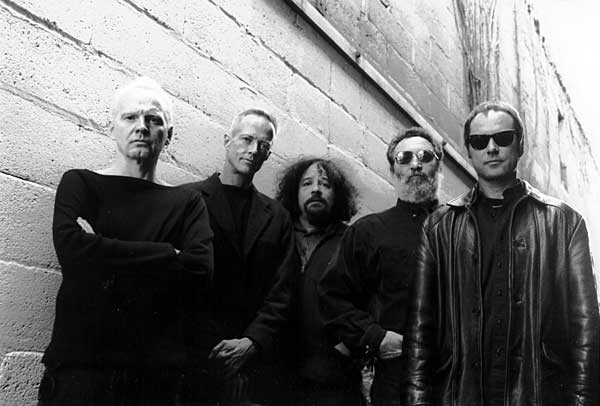
Which album of O-Type do you find the most interesting?
Dale Sophiea: Pick one of our children? Get real!
They all have their appeal. The first O-Type (‘O-Type’) was Bruce, S.C. Norman (my Drumtraks drum machine) and me letting it all hang out. Truman Capote, Aldous Huxley, and Jim Siedow (the gas station guy from The Texas Chainsaw Massacre) make spoken word appearances. ‘Mommy’ and ‘Darling’ explored some of Bruce’s deepest and sickest fantasies. I often need to shower off after listening.
Of the ‘New Edge’ series, ‘Strict’ was where I really got to unload my sample tool kit; ‘Balkana’ unleashed Bruce’s displeasure with the state of the world; ‘Medication’ was the most fun to come up with complimentary song titles; ‘Lugubrious’ was essentially a horror movie; in ‘Western Classics’ we musically channeled some of our favorite movies; ‘GodAwful’ was a movie & soundtrack where a lot of bugs and creatures go wild.
What about the 1995 release of The Siamese Stepbrothers?
Dale Sophiea: Bruce had played with Henry Kaiser a few times before we joined him, Tom Constantin, and Lukas Ligeti in this project. While Henry and Tom were away touring, the three of us got together at Lukas’ studio and created the base for most of the songs, then we went into Oliver DiCicco’s Mobius Studio and recorded/mixed them in a couple of days. We also played them live at the Great American Music Hall.
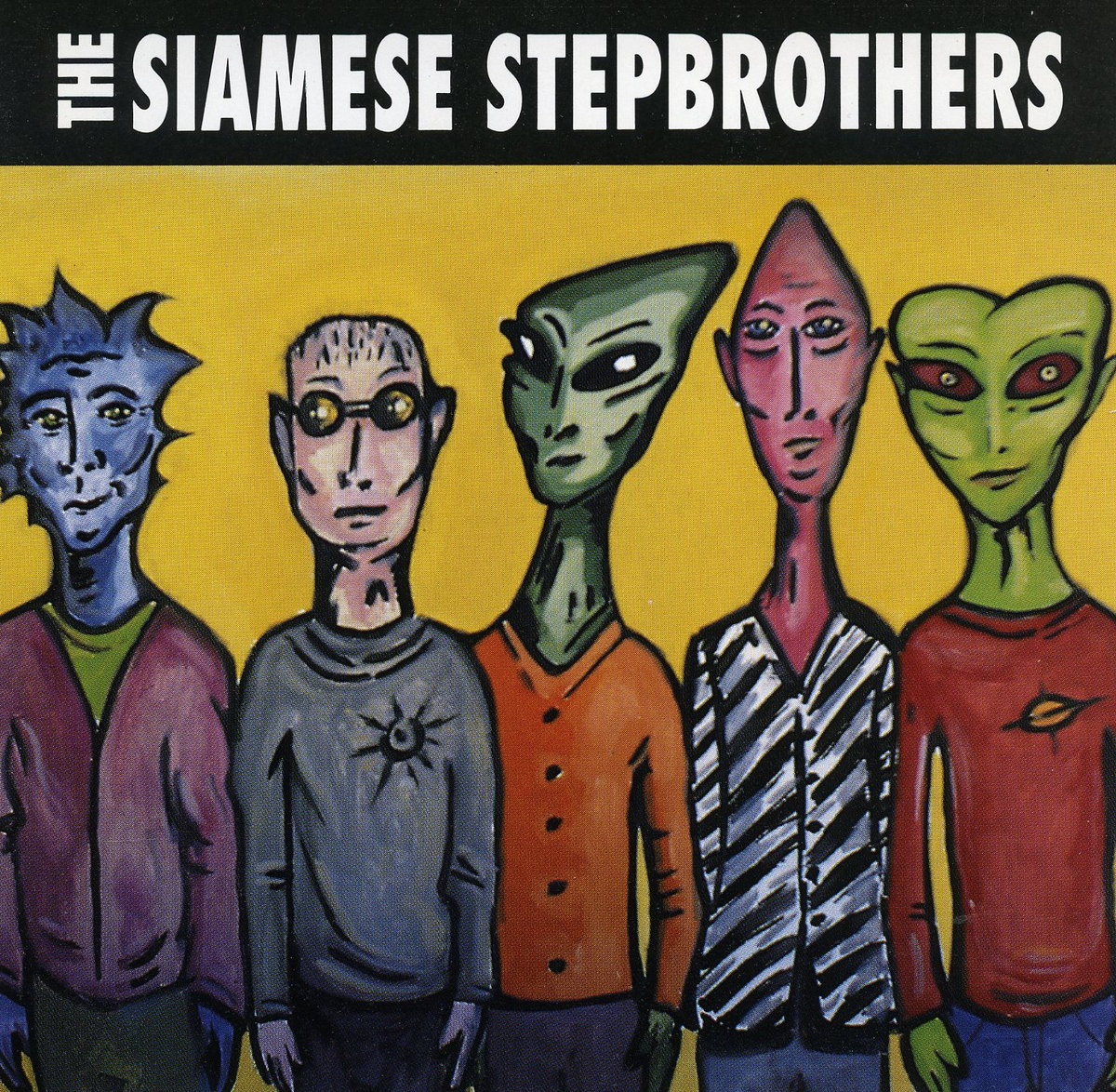
I just recently found out about another project called Grale. ‘Eternity’ was released several years ago.
Dale Sophiea: In 2010, Gregory Hagan and I played a duet gig at the Ivy Room in Berkeley and called ourselves Gr(egory) (D)ale. Bruce and I had been playing duets as lazyboy for a while, so we combined them and tried to call it Brale and Brale.Co for about 15 minutes. My son Nico joined us for several gigs and a recording – ‘Eternity – on Greg Scharpen’s Alethiometer Records. Gregory and I rounded it out by playing one last (?) gig 12 years later in September ’22.
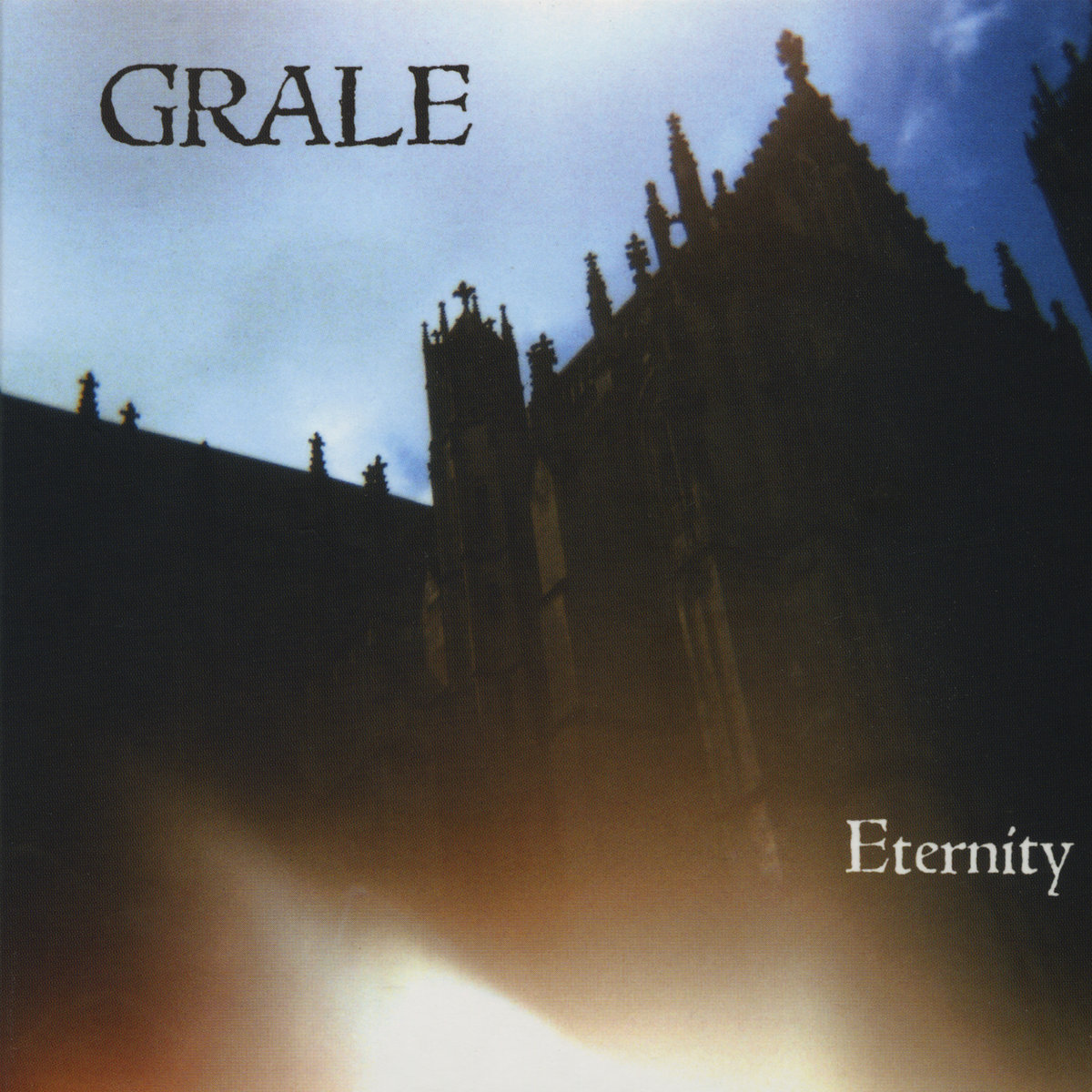
Would you like to tell us about other projects you were involved with?
Rich Stim: My collaboration with Angel Corpus Christi has been most rewarding. We’ve had ups (touring Europe twice, signed to a major label) and downs (she fired me as the bass player), but there’s nothing like playing guitar with your spouse in a popular club band. Check out her discography.
Otherwise, my favorite recording is an album I made with Bruce entitled ‘Bar Stool Walker’. It’s a showcase of Bruce’s guitar skills.
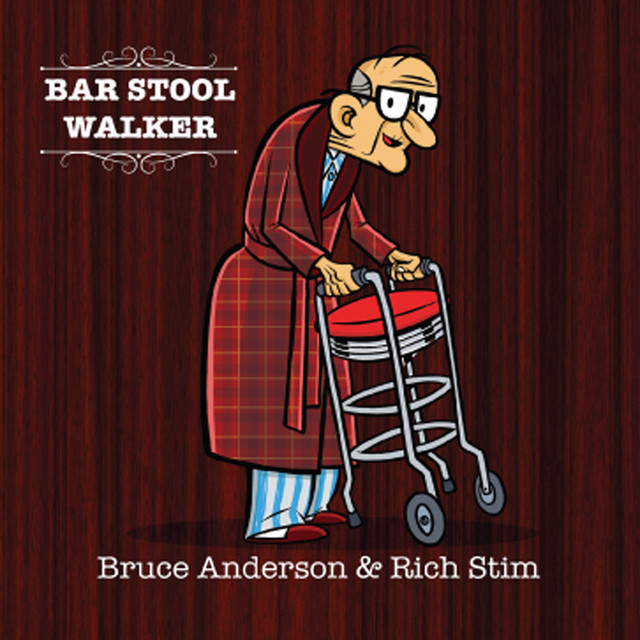
In January 2022 we sadly lost Bruce Anderson.
Dale Sophiea: A huge void for all of us that he left behind, but he outlasted a “6 months to a year” prognosis by several years, finished ‘Eternity’, two ‘Bar Stool Walkers’, a final lazyboy, and two last MX-80 Sound albums in that time. He was ready to go and died peacefully, without pain.
Rich Stim: Yes, it’s still hard to believe I’m here and he’s not.
Would you like to discuss your 2015 album, ‘So Funny’?
Dale Sophiea: I was overjoyed to have my son Nico join us as our drummer. We had already recorded the rest of the instrumental tracks, so he had the arduous task of laying his parts over them after the fact. Some neat tunes, including several from movie soundtracks, for which Rich has made entertaining videos.
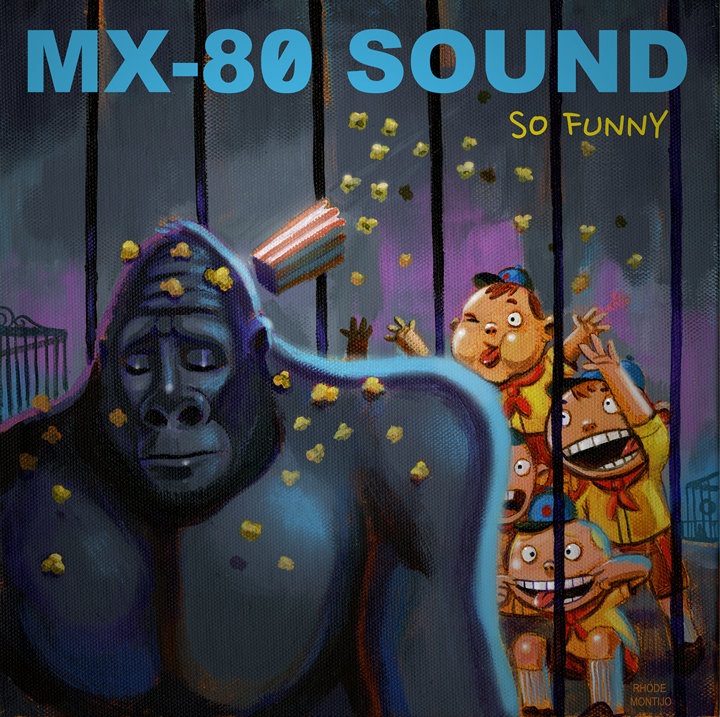
In 2021 you released ‘Hougher House’ and just recently you put out ‘Better Than Life’, what’s the concept behind these two records? Can you share some further words about the recording and producing process?
Dale Sophiea: ‘Hougher House’ started out as an O-Type instrumental we’d worked on for years and thought we’d finished. Then we decided to open it up with actual, live drums instead of mainly sampled percussion, so Nico came down and added them. Then we enticed Rich to come in and round out some of Bruce’s insane Indiana Gothic horror ideas which had been percolating for years. Andreas Matthews at Psychofon agreed to release both the “audiobook” and instrumental mixes as a double CD.
Bruce, nearing the end, decided he’d like to consolidate Rattletrap and MX-80 into one unit for a last go. We practiced the tunes separately, then together, until the double trio went into Oakland’s 25th Street Studio for 4 days and whipped it out. Bruce held up astonishingly well. We were elated when Steve Albini said he’d mix it, even though we didn’t record at his studio.
Rich Stim: That’s when Nico Sophiea joined MX-80, and he freshened things up. I like ‘Uh-Oh’ and ‘Blue Skies,’ but the best writing is ‘Memories of My Nonexistence,’ which is mainly taken from an email from my Uncle Eddie, who passed away not long afterward. The cover art is by Rhode Montijo, and it depicts a scene Bruce remembered from his childhood — an unpleasant visit to a zoo.
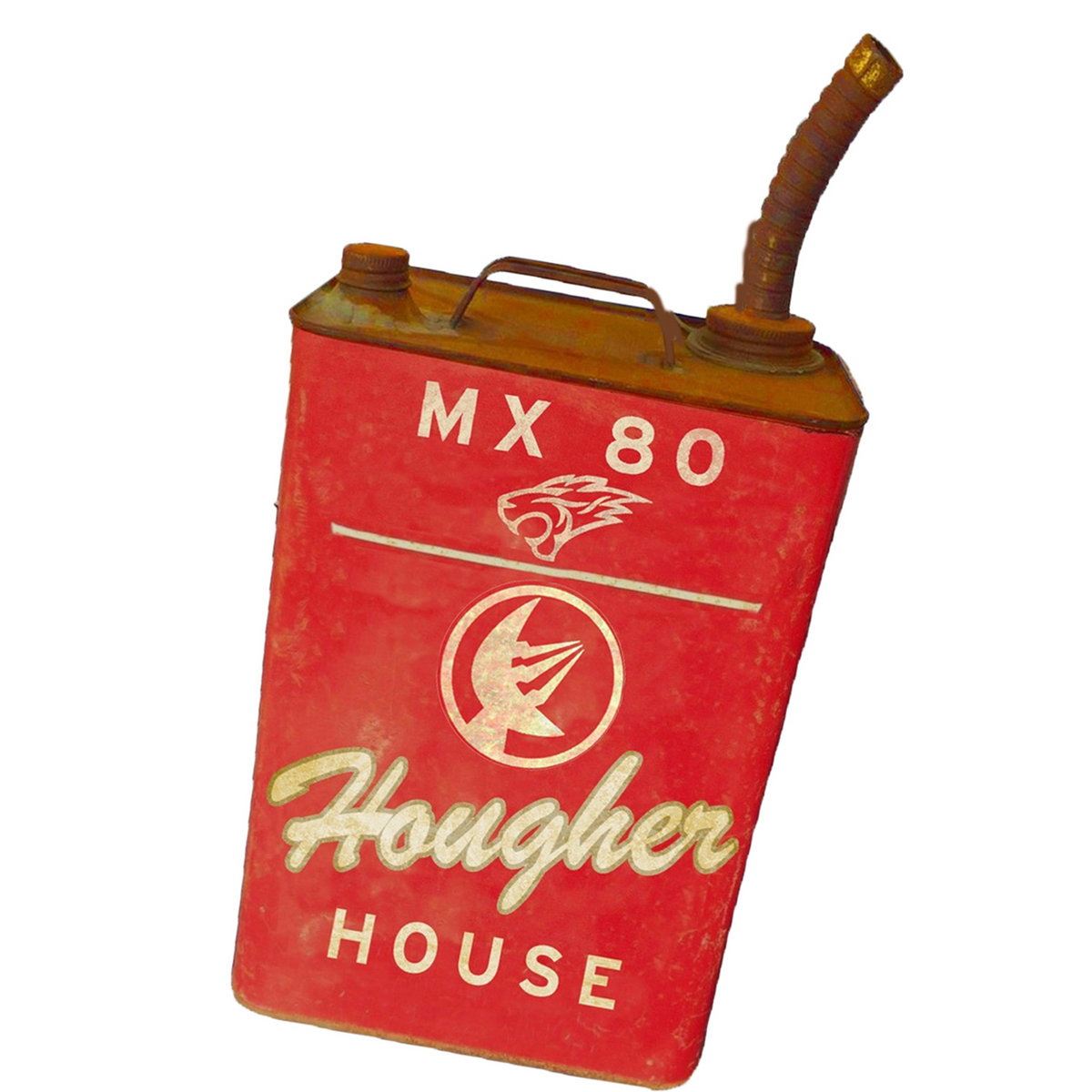
Rich Stim: As for ‘Hougher House’, Bruce and Dale came to me with a long piece of music. They didn’t know what to do with it and asked me to put a story to it. Bruce had this idea for a TV series about a family of meth addicts in Indianapolis. So, I took his idea and expanded it into a 20-minute story. It’s an interesting experiment but more like an audiobook with music than an MX-80 record. It has its moments, though.
I had little to do with ‘Better Than Life’ except for the lyrics and some horn. Bruce was ill and wanted to merge MX-80 (Jim, Dale, Nico, and me) with Rattletrap, a band he played with in his final years featuring John Morman and Chris Xefos.
They went into the studio and recorded the tracks. I recorded my vocals at home. Steve Albini volunteered to mix the album, so a group went to Chicago to finish it. Hopefully, a vinyl version will be out in 2023.
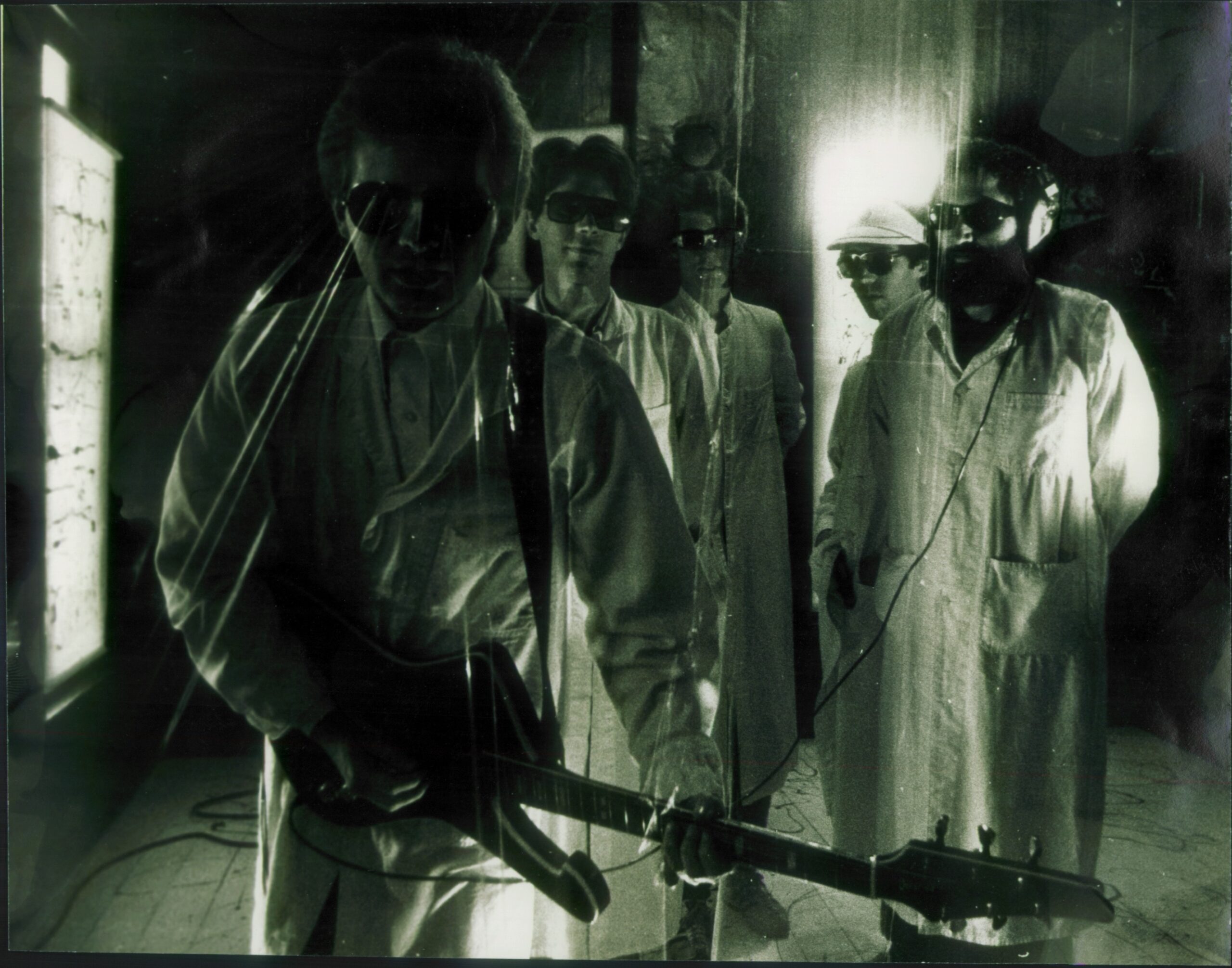
As a band, how do you typically approach music making?
Dale Sophiea: If it sounds good, do it.
We truly enjoyed the Supreme Echo and the release of ‘Big Hits And Other Bits,’ consisting of 1976 material comprising 18 songs, including the entire original 7-song EP, 2 rarities and 9 previously unreleased tracks, all meticulously mastered from the original analog tapes. Would you like to share some further words about the unreleased material?
Dale Sophiea: It’s all from around the time of ‘Big Hits,’ from rehearsals, live shows, and unreleased studio recordings. We had so many songs in our repertoire, we don’t even remember some of them.
Looking back, what was the highlight of your time in the band? Which songs are you most proud of? Where and when was your most memorable gig?
Dale Sophiea: The obvious highlight is being able to play with the members of the band – all good friends – for so many years. That we all got along well, and moved in the same musical direction, always made getting together a joy.
Some of my favorite songs are O-Type tunes that Rich put in a blender and completely transformed. ‘This Stinking Job’ morphed into ‘Thank You Boss,’ ‘Country Kitchen’ became ‘Dough Boy Joe,’ and of course ‘Hougher House’.
Too many gigs to choose from, but the early Patti Smith gig and the two Shellac shows stand out, as does our New York tour. But how can you leave out the Bloomington library shows, a show with DNA in SF, a Chicago show with Scissor Girls and Wolverton Brothers, and a show at Bottom of the Hill with Merzbow?
Rich Stim: The most memorable gig was opening for Patti Smith in 1976 at the Poplars Hotel in southern Indiana. The band was red hot, and the speed and precision with which we performed overcame any reservations about the music. IMHO if that show were a battle of the bands, we would have won. When we finished playing, it was like when Caesare knocked them dead in The Idolmaker. We just wanted to get back on stage and keep going.
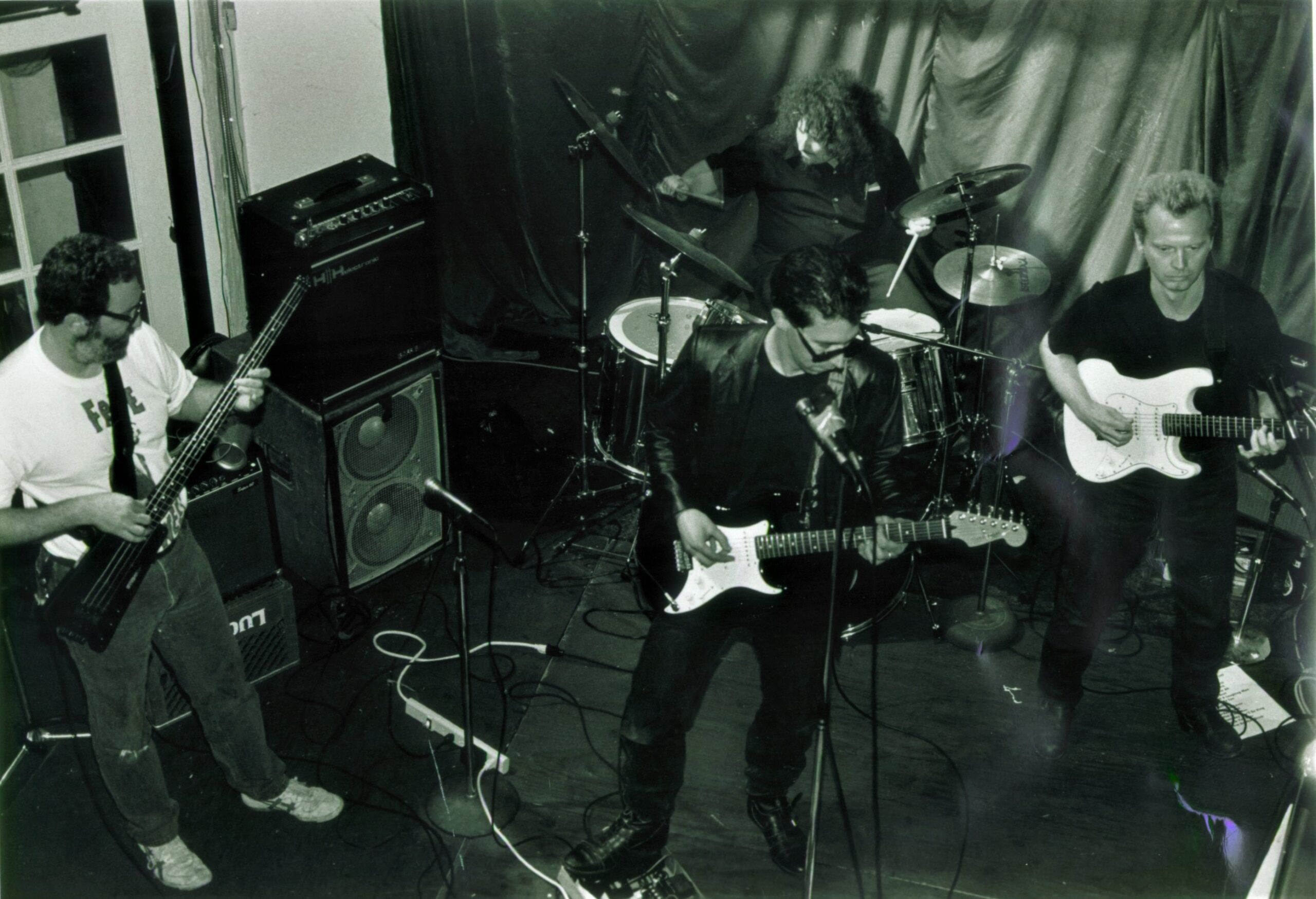
Is there any unreleased material by MX-80 Sound?
Dale Sophiea: Is there?!?!? You bet!
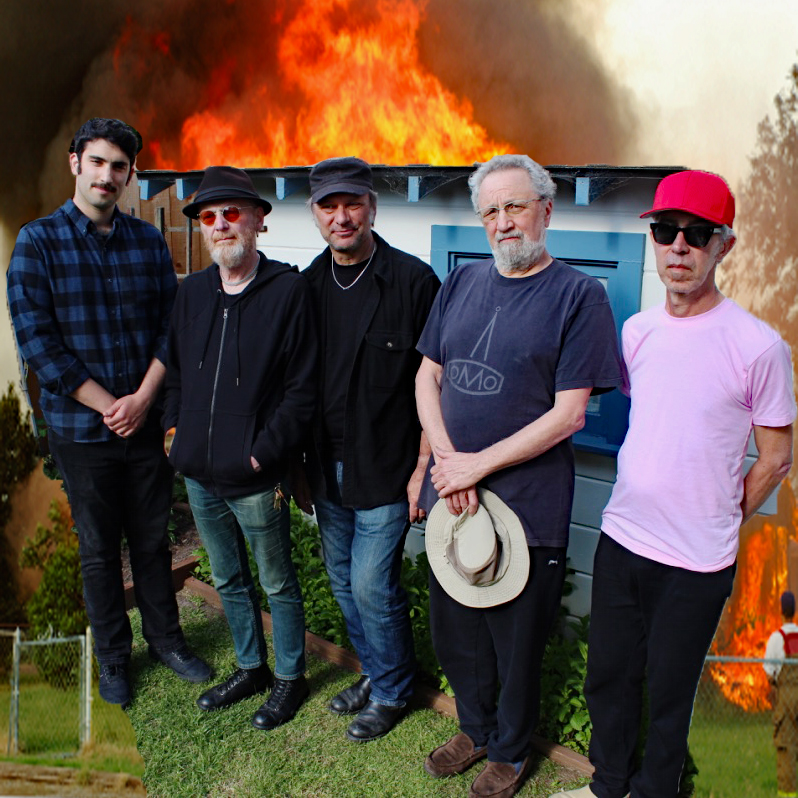
Let’s end this interview with some of your favourite albums. Have you found something new lately you would like to recommend to our readers?
Dale Sophiea:
‘Dry’ by PJ Harvey
‘Monteverdi Vespers 1610’ (L’Arpeggiata, Parrot, Savall, Gardiner, or I Fagiolini)
Feldman Rothko Chapel (any recording)
Any Thomas Newman film score (eg. The Player, American Beauty, Side Effects)
‘Free Jazz’ Ornette Coleman
‘Let Me Tell You’ by Hans Abrahamsen, Barbara Hannigan
‘somesurprises’ by somesurprises
‘Under The Skin’ soundtrack by Micah Levy
’35 Whirlpools Below Sound’ by Rick Cox & Thomas Newman
‘Four Thousand Holes’ by John Luther Adams
Thank you for taking your time. Last word is yours.
Dale Sophiea: I think I’ve said enough.
Rich Stim: I’ve already said too much. MX-80’s credo: “Always leave ’em wanting less.”
Klemen Breznikar
Headline photo: MX-80 Sound in 1980
MX-80 Sound Official Website / Facebook / Instagram / Bandcamp / YouTube
Supreme Echo Facebook / Instagram / Bigcartel / Bandcamp

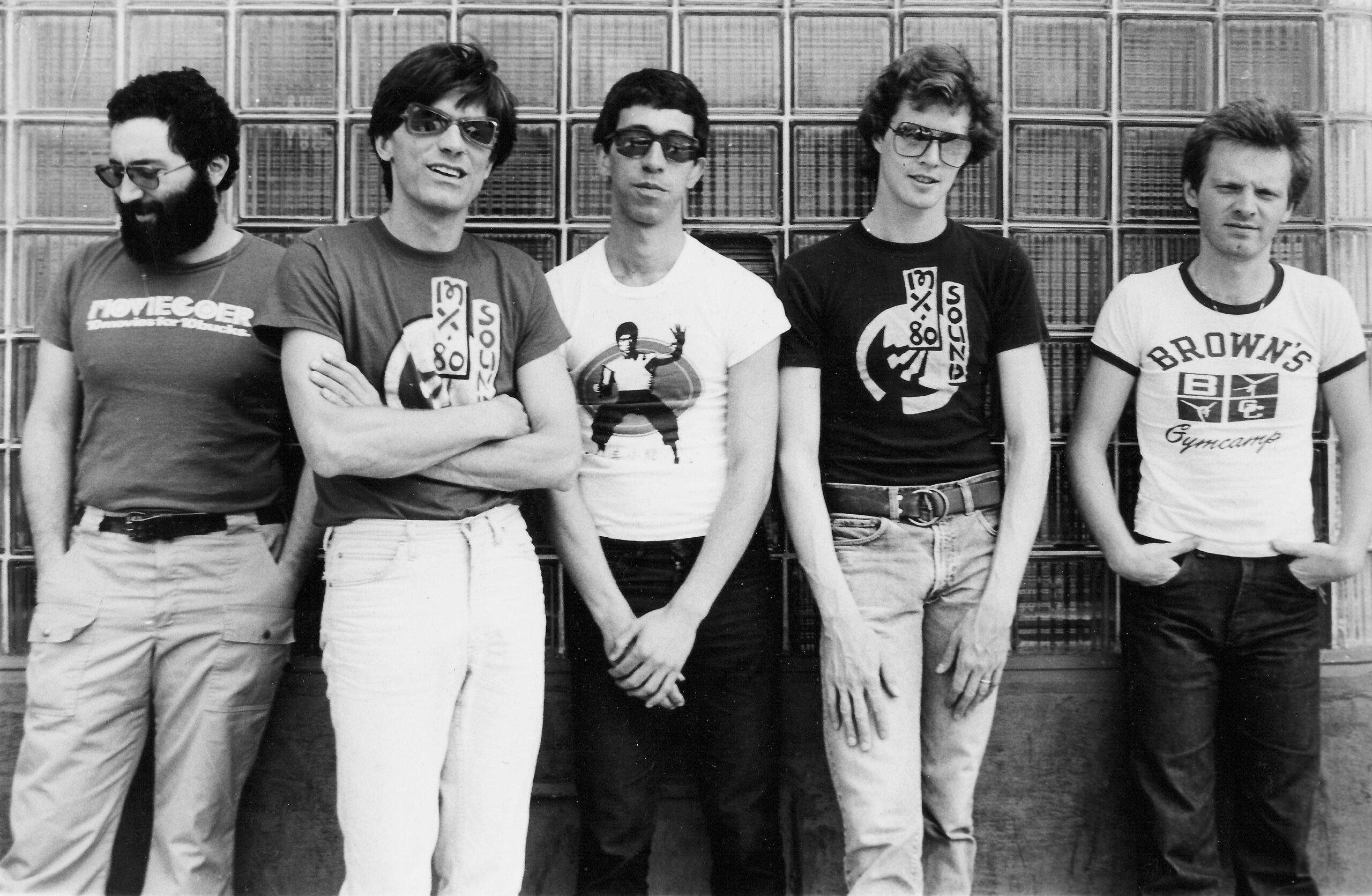
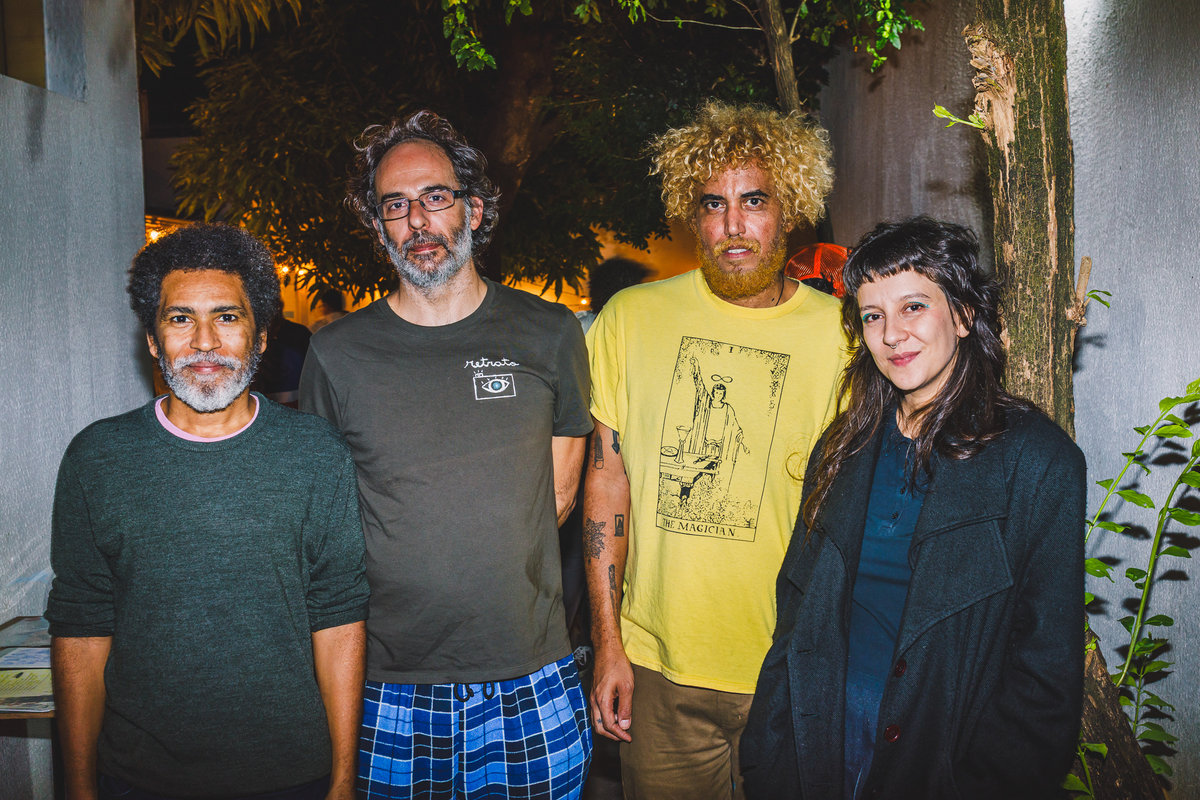
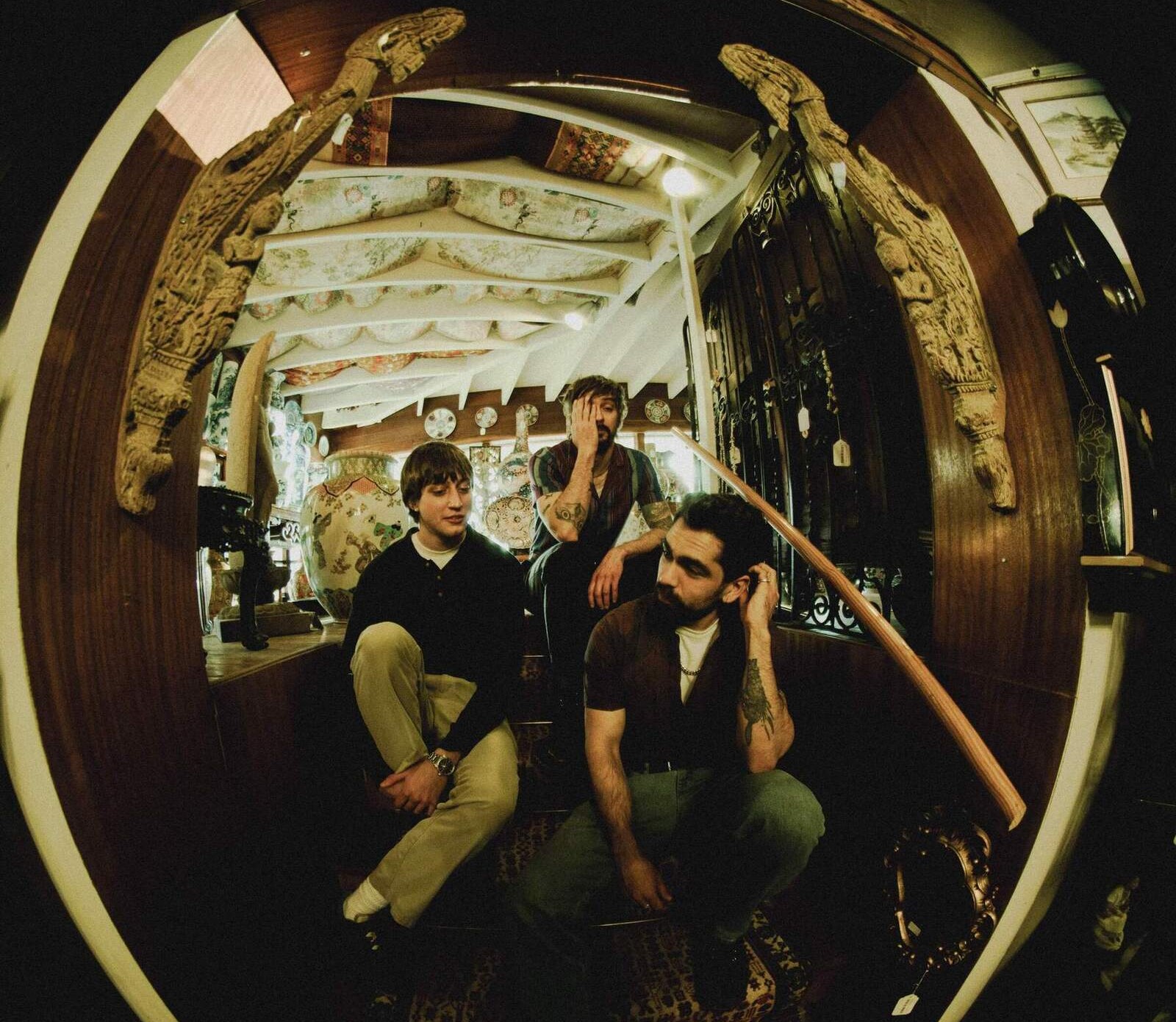
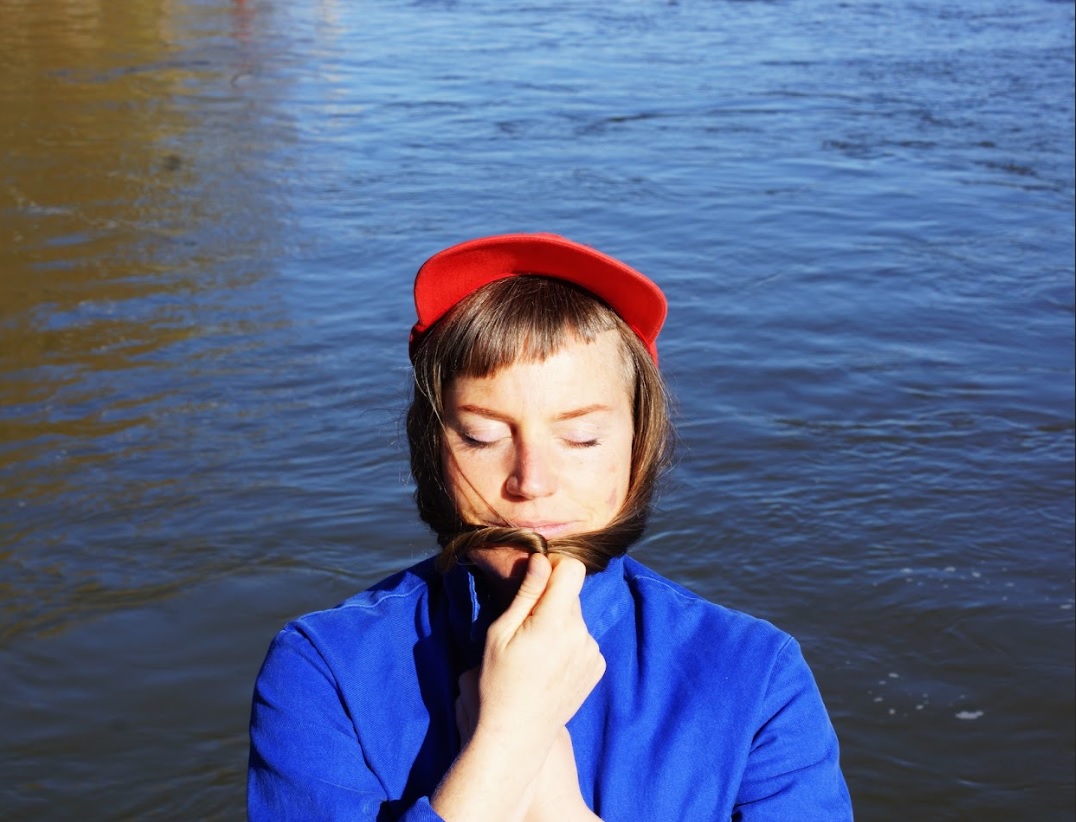
Thank you
Wow, really great interview with a favorite band. And a ton of new information. Superb!